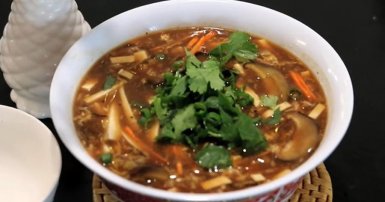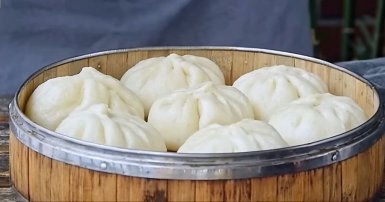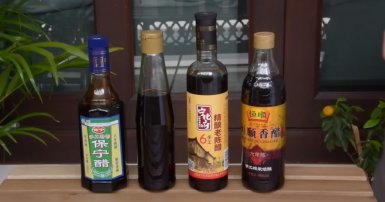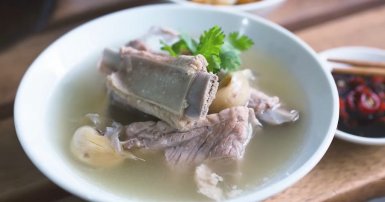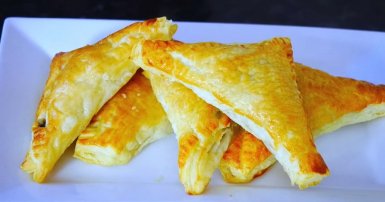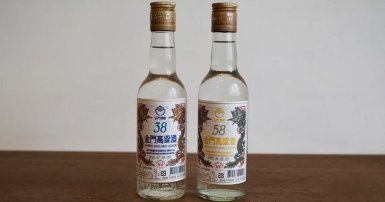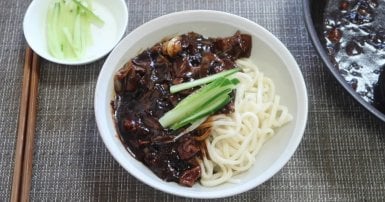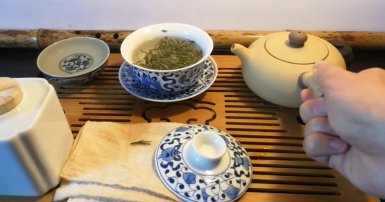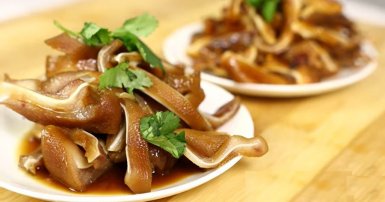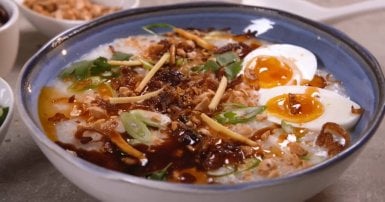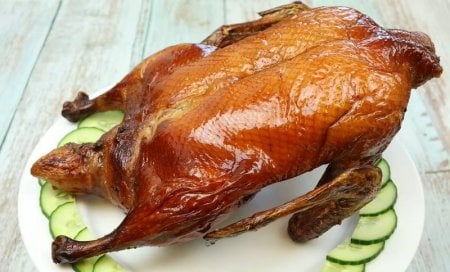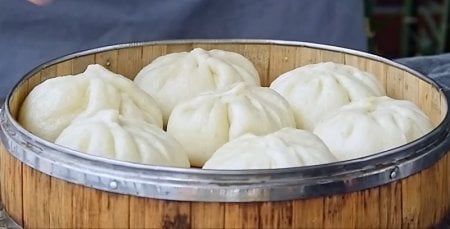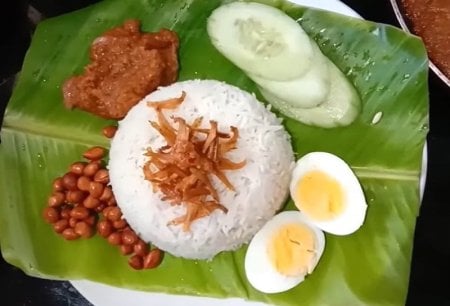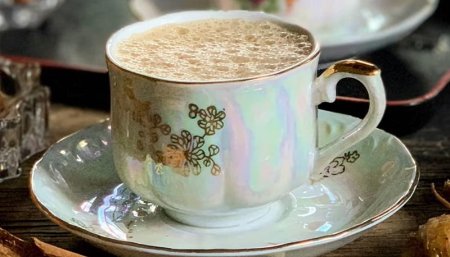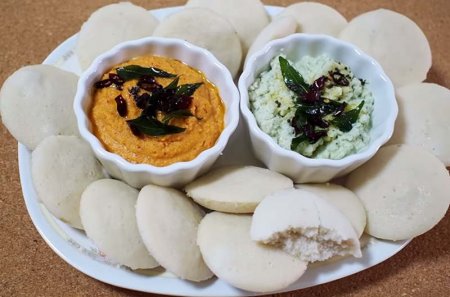Indulge in the sweet symphony of Chinese Desserts, a diverse array of confections that captivate palates. From the iconic Mooncakes, a symbol of Mid-Autumn Festival, to delicate Tangyuan, sweet rice balls celebrating the Winter Solstice, each dessert is a delightful blend of flavors and textures. Savor the crispy delights of Egg Tarts, the velvety richness of Red Bean Paste Buns, and the refreshing taste of Grass Jelly. Whether it's the auspicious symbolism of Nian Gao during Lunar New Year or the year-round pleasure of Almond Cookies, Chinese desserts showcase a culinary artistry deeply rooted in tradition and enjoyed with every sweet bite.
Mooncake
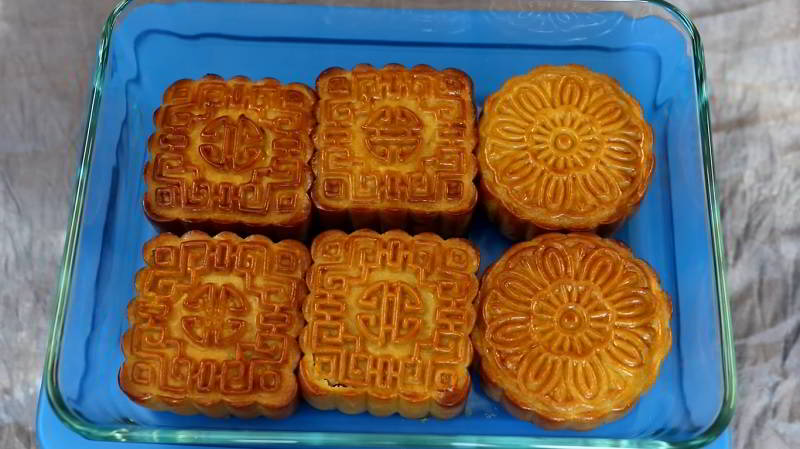
Mooncakes, integral to the Mid-Autumn Festival, hold a cherished place in Chinese culinary and cultural traditions. These round pastries are symbolic of family reunion, expressing love and good wishes. The outer layer, tender and flaky, cradles a rich and sweet filling, traditionally made from lotus seed paste or red bean paste, often featuring a salted duck egg yolk at the center.
Mooncakes are not just delectable treats; they are artfully crafted with intricate designs on their surface. These designs may include symbols of prosperity, longevity, or harmony, adding a visual dimension to their cultural significance. The round shape of mooncakes symbolizes completeness and unity, reflecting the full moon that graces the night sky during the Mid-Autumn Festival.
Gift-giving is a common practice during this festival, and exchanging mooncakes is a gesture of goodwill. The act of presenting mooncakes serves as a tangible expression of gratitude, respect, and best wishes for the recipient's well-being.
The consumption of mooncakes during the Mid-Autumn Festival is not just a culinary experience; it is a cultural ritual that fosters family bonds, reinforces traditions, and brings people together in celebration of a momentous occasion.
Tanghulu
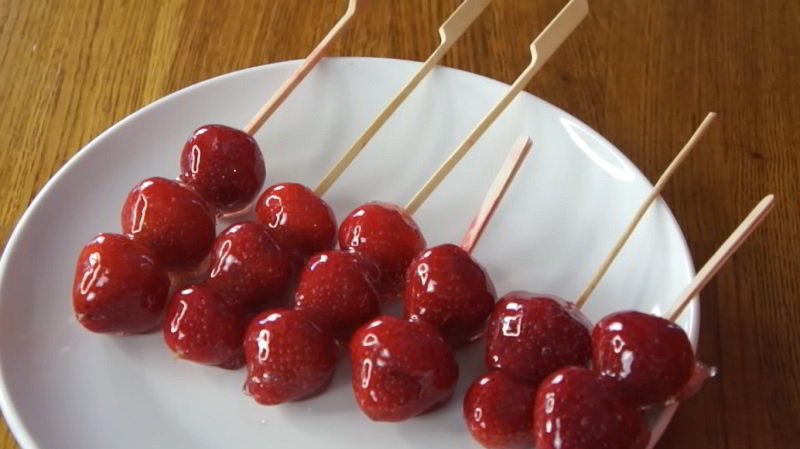
Tanghulu, also known as bingtang hulu, is a classic Chinese delicacy that transforms ordinary fruits, primarily Chinese hawthorn, into a delectable treat. These fruits are meticulously skewered on bamboo sticks and generously coated with a crystallized sugar syrup, creating a distinctive calabash-like appearance. It's essential to note that tanghulu is not your typical candied fruit; instead, it boasts a hardened sugar coating, delivering a perfect balance of sweetness and sourness.
Originating from the Song Dynasty, tanghulu has maintained its popularity, especially in northern China, where it has become a cherished snack. While Chinese hawthorn remains the traditional choice, historical records from the Qing Dynasty reveal the innovative use of grapes and walnuts. In contemporary times, the selection of fruits has expanded, featuring a diverse array such as cherry tomatoes, strawberries, oranges, kiwifruit, pineapples, blueberries, and bananas. The process involves carefully removing the pits and seeds from the hawthorn, often replacing them with sweet red bean paste before skewering and dipping, adding an extra layer of flavor to this delightful treat.
Grass Jelly
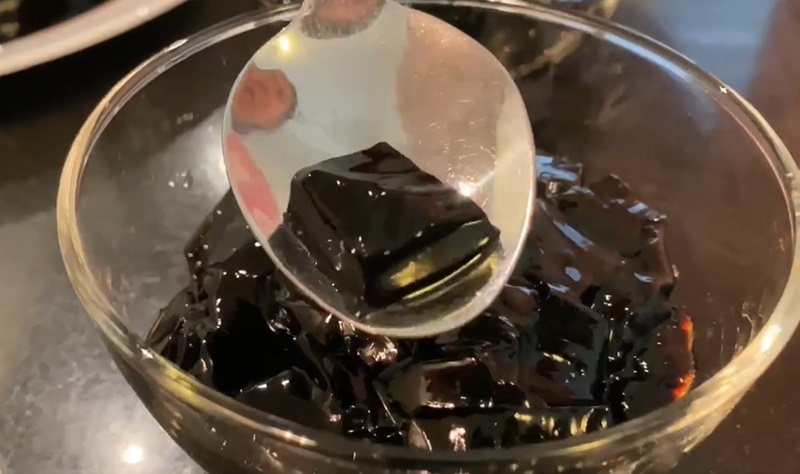
Grass jelly, known as leaf jelly or xiancao, is a cherished and revitalizing dessert deeply rooted in Chinese gastronomy. Derived from the mesona chinensis plant's leaves and stalks, this delicacy offers a unique texture and a nuanced hint of bitterness. The leaves undergo a meticulous boiling process, and then they are seamlessly integrated with a sweet syrup or honey to counterbalance the inherent bitterness. Served in a chilled form, grass jelly can be relished on its own or paired with complementary elements. It often finds companionship with fresh fruits like lychee, mango, or longan, adding a delightful sweetness that enhances the overall flavor profile. This culinary creation presents a harmonious blend of natural elements, showcasing the artistry of Chinese desserts and providing a refreshing and enjoyable treat for those seeking diverse and invigorating taste experiences.
Dragon's Beard Candy
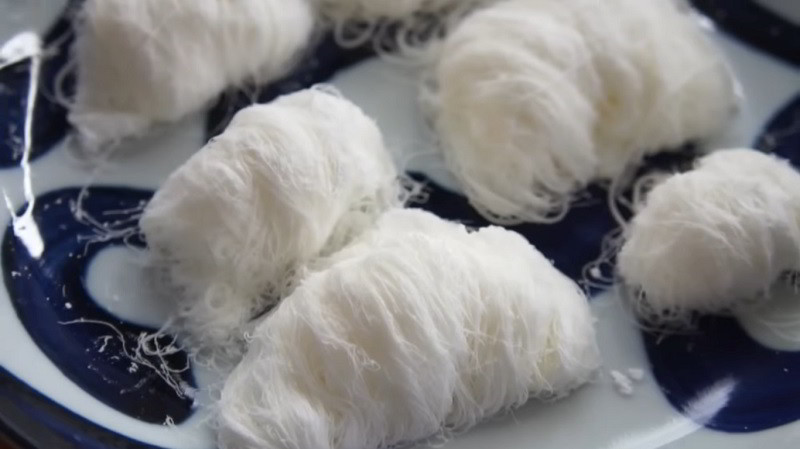
Dragon's beard candy, also known as Longxusu or Chinese cotton candy, stands as a handmade traditional culinary art originating from China. This confectionery masterpiece bears similarities to floss halva and Western cotton candy, and its popularity has transcended Chinese borders, making it a treasured delight in various Chinese communities worldwide. Initially crafted in China, Dragon's beard candy has gained regional fame in South Korea during the 1990s, Singapore in the 1980s, and more recently in Canada and the United States.
Characterized by a low sugar content of 19% and low saturated fat content of 2%, Dragon's beard candy offers a relatively healthier option compared to cotton candy, which is fat-free but boasts a very high sugar content of 94%. Despite its culinary allure, this delicate treat has a limited shelf life, vulnerable to moisture and prone to melting in higher temperatures, particularly during warm weather. This traditional Chinese confectionary reflects the craftsmanship and cultural richness embedded in Chinese sweets, presenting a delectable and culturally significant experience for those who indulge in its intricate flavors and textures.
Tangyuan
-1702976380.jpg)
Tangyuan, a cherished traditional Chinese dessert, consists of glutinous rice meticulously shaped into delightful balls, enjoyed immersed in a steaming broth or syrup. These rice balls vary in size, ranging from marble-sized treats to those comparable to ping pong balls, and may even conceal flavorful fillings. Traditionally associated with the Lantern Festival, tangyuan transcends this celebration, becoming a symbol of unity, togetherness, and completeness due to its homophonic connection with "union."
This delectable dish extends its presence to various joyous occasions, becoming a staple at family reunions, Chinese New Year festivities, weddings, and the Dōngzhì (winter solstice) festival. Beyond its gastronomic appeal, tangyuan embodies cultural significance, weaving threads of tradition and celebration into the fabric of Chinese culinary heritage. Whether enjoyed during festive occasions or family gatherings, tangyuan brings not only a delightful treat but also a sense of unity, making it a cherished and versatile symbol in Chinese culinary traditions.
Guilinggao
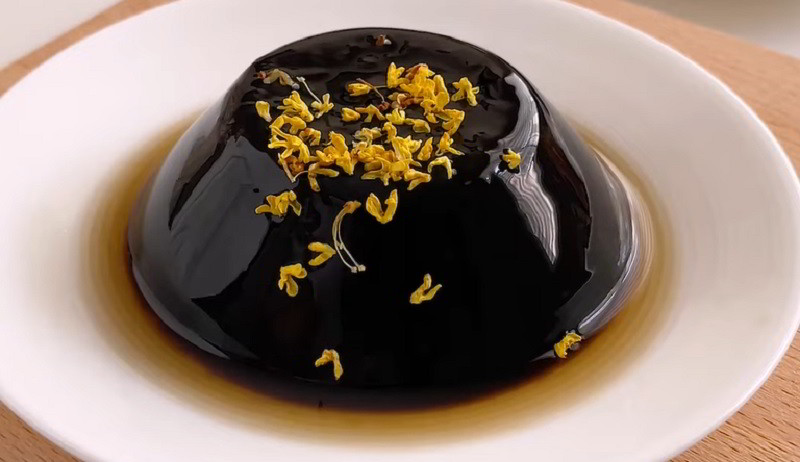
Guilinggao, also known as turtle powder, is a jelly-like substance that serves a dual role in Chinese culture – as a traditional medicinal remedy and a popular dessert. Historically, it was crafted from the paste of the plastron, or bottom shell, of the Cuora trifasciata turtle, often referred to as the "golden coin turtle" or "three-lined box turtle." The plastron was combined with herbal elements, particularly the roots of China roots Smilax glabra.
In contemporary China, commercial farming of the golden coin turtle helps alleviate concerns about its critically endangered status. However, due to its high cost, guilinggao often incorporates other, more readily available, turtle species when turtle-derived ingredients are used.
Modern variations of guilinggao, primarily marketed as a dessert, frequently omit turtle shell powder. Instead, they integrate herbal additives akin to the medicinal version, with both iterations touted for their potential benefits for skin complexion when consumed. This adaptation reflects the evolution of guilinggao, transcending its medicinal origins to become a delectable treat with a connection to traditional herbal practices.
Sata Andagi
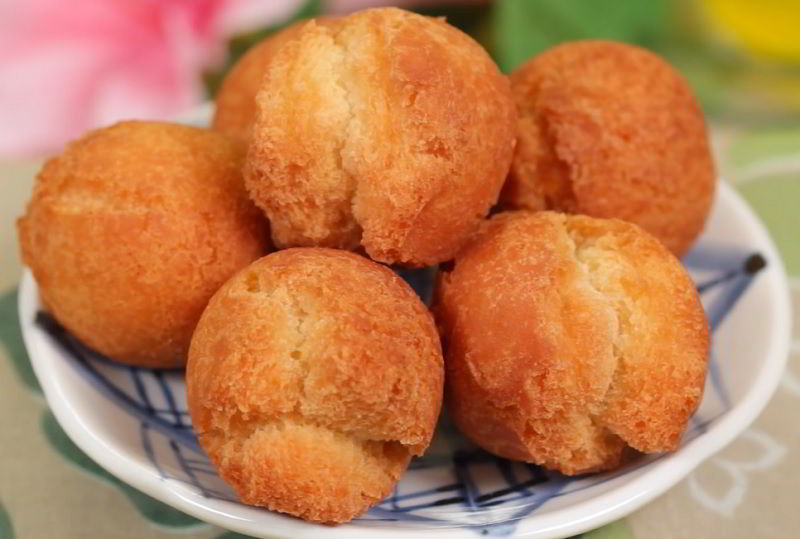
Sata andagi, reminiscent of doughnuts, originated in Southern China, where they were known as sa-yung before making their way to Okinawa, Japan. These sweet, deep-fried buns have also gained popularity in Hawaii, often referred to simply as andagi. A key element of Okinawan cuisine, sata andagi is created by blending sugar, flour, and eggs into a dough, forming it into balls, and then deep-frying them.
Rooted in the culinary traditions of the Ryukyu Islands, the preparation techniques for sata andagi draw influence from both Chinese and Japanese methods. The desired result is a delectable treat with a crispy, browned exterior and a light, cake-like interior. This delightful fusion of Chinese and Japanese culinary heritage, now embraced in Okinawa and beyond, showcases the versatility and adaptability of traditional recipes as they traverse cultural boundaries and become beloved delicacies in diverse regions.
Douhua
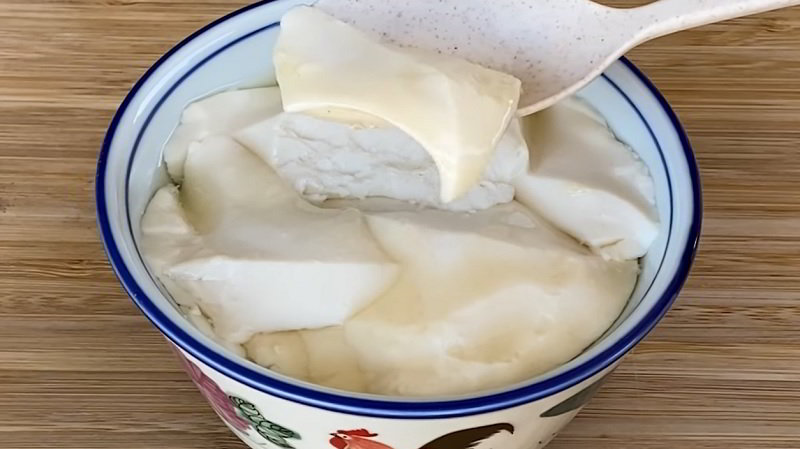
Douhua, a cherished Chinese delight, stands out as a versatile treat crafted from silken tofu, offering a range of sweet and savory renditions. Recognized as doufuhua, soybean pudding, or tofu brains, this culinary gem holds a special place in China's diverse gastronomic landscape, with Taiwanese and Cantonese variations acclaimed for their representation of Southern Chinese cuisine.
In northern China, it affectionately earns the moniker "tofu brains," emphasizing its velvety and tender texture. An integral part of yum cha, douhua takes center stage in the vibrant traditions of Southern Chinese culinary practices.
Beyond formal dining, douhua finds favor along well-trodden hiking paths and sandy shores in Hong Kong, where it adopts the local title of tofu fa. Whether relished for its subtle sweetness or savory notes, this delectable dish exemplifies the essence of Chinese culinary creativity, enduring as a source of gastronomic joy and cultural importance.
Custard Tart
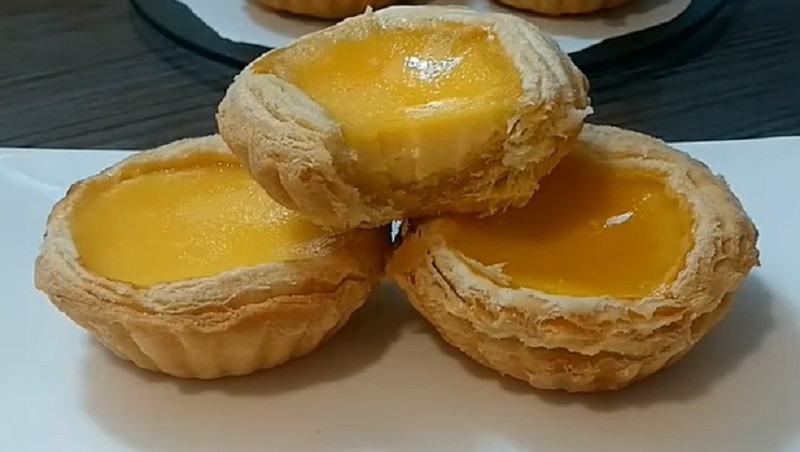
Custard tarts, also known as flan pâtissier/parisien, are delectable baked pastries featuring a delicate outer crust embracing a luscious filling of egg custard. Originating as a beloved classic, these tarts undergo a delightful transformation in Chinese culinary influence, often adorned with a dusting of cinnamon.
The fusion of tender pastry and creamy custard creates a harmonious blend of textures and flavors, making custard tarts a universally cherished treat. The addition of cinnamon in the Chinese variant introduces a warm and aromatic nuance, elevating the overall sensory experience.
Whether enjoyed as a nostalgic classic or savored with a touch of cinnamon-inspired flair, custard tarts symbolize the global appreciation for this delightful marriage of pastry and custard, showcasing the adaptability of culinary traditions across different cultures.
Sachima
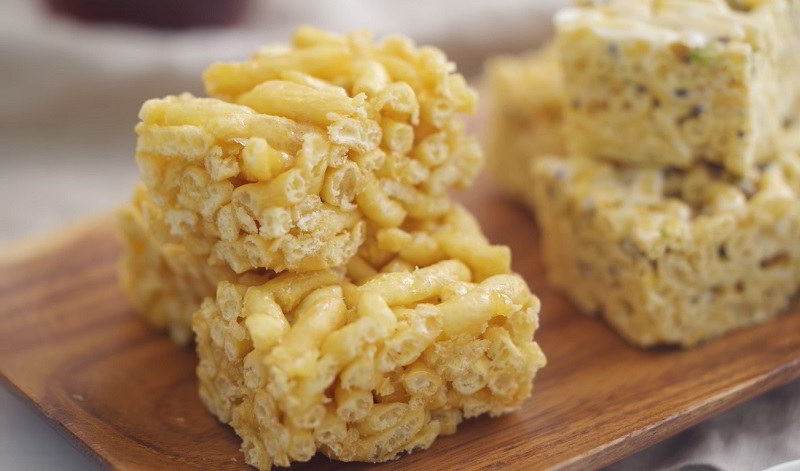
Sachima, a delightful sweet treat in Chinese culinary repertoire, originates from Manchuria and has become a beloved snack across China. This confection is crafted by weaving together airy strands of fried batter, creating a texture reminiscent of American Rice Krispies Treats. Sachima's charm lies in its versatility, with regional Chinese cuisines adding unique decorations and flavors while maintaining a consistent appearance.
The fundamental structure of Sachima involves intricately woven fried batter strands held together by a firm sugar syrup. Despite regional variations in flavor profiles and adornments, the essence of Sachima remains consistent throughout China.
Whether enjoyed as a nostalgic delight or explored in diverse regional renditions, Sachima reflects the adaptability and creativity within Chinese culinary traditions. The combination of crunchy fried batter and the sweetness of the sugar syrup creates a harmonious balance, making Sachima a cherished treat that transcends regional boundaries.
Nian Gao
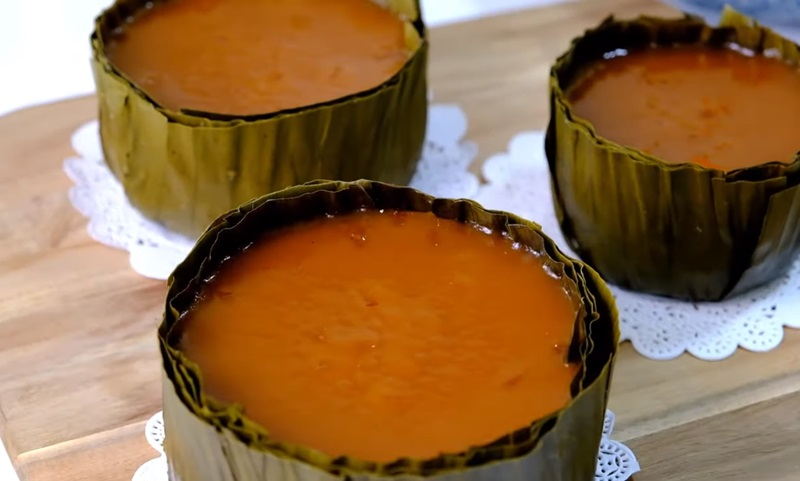
Nian Gao, also referred to as Chinese New Year cake, is a traditional rice dish that holds great significance in Chinese cuisine. This sweet and sticky delicacy, made from glutinous rice flour, is commonly enjoyed during the Lunar New Year celebrations. The name "nian gao" translates to "sticky cake" and is believed to bring good luck and prosperity for the upcoming year. To prepare nian gao, the rice is soaked overnight and then finely ground into flour. This flour is combined with water and sugar to form a thick batter, which is steamed until it solidifies into a soft and chewy cake. Some variations of nian gao may incorporate additional ingredients like red dates, coconut, or sesame seeds to enhance its flavor. Nian gao is typically sliced into thick pieces and served either plain or pan-fried, the latter providing a crispy outer layer while maintaining the chewy texture inside.
Sweetheart Cake
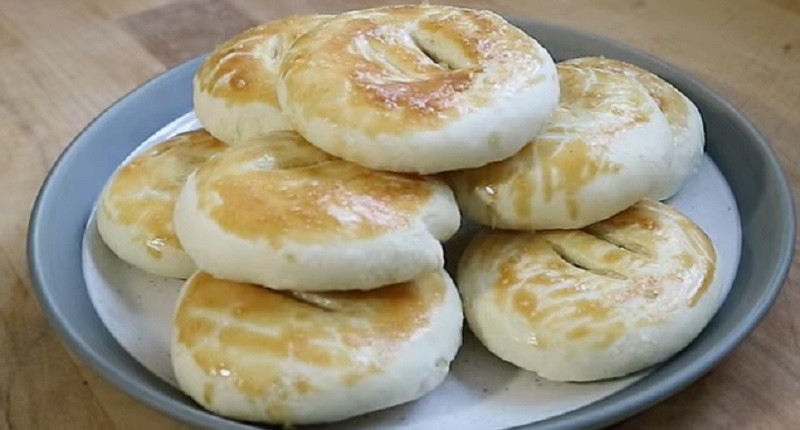
A traditional Chinese pastry delicacy, known as a sweetheart cake, wife cake, or marriage pie, embodies the essence of time-honored craftsmanship. Originating in Guangdong province and celebrated as a specialty in Hong Kong's Yuen Long District, this treat features a meticulously crafted flaky crust that encases a delightful filling comprising candied winter melon, white sesame seeds, and glutinous rice flour. The addition of coconut, almond paste, and a touch of vanilla elevates the medley of flavors.
The pastry's authenticity is distinguished by the use of pork lard shortening, contributing to its flaky texture that complements the subtle sweetness of the filling. In Western adaptations influenced by immigration, butter may substitute lard, subtly changing the flavor profile while retaining the essence of this cherished dessert. Renowned for its unique blend of textures and flavors, the sweetheart cake embodies the culinary artistry deeply rooted in Chinese traditions, serving as a beloved symbol of craftsmanship and cultural heritage.
Tong Sui
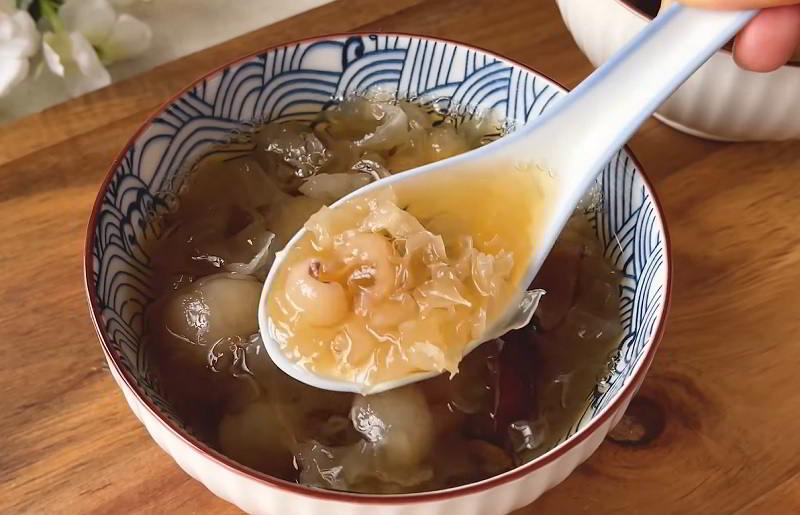
Tong sui, also referred to as tim tong, is a diverse selection of sweet soups and custards served as desserts at the end of a Chinese meal. Originating from the Lingnan region, which includes areas such as Guangdong, Macau, Hong Kong, Guangxi, Hainan, and parts of other provinces in China, tong sui holds cultural importance. While the term traditionally denotes soupy desserts from Lingnan, it is also used more broadly to describe any soupy dessert across Chinese-speaking regions.
Dedicated establishments, known as tong sui stores, offer a wide range of these delectable desserts, showcasing the culinary heritage of Lingnan. Over time, the popularity of tong sui has extended beyond its place of origin, reaching various regions across China and even international locations like Australia, Canada, and the United States. The presence of tong sui stores worldwide highlights the widespread appeal and admiration for these delightful sweet treats.
Sesame Seed Candy
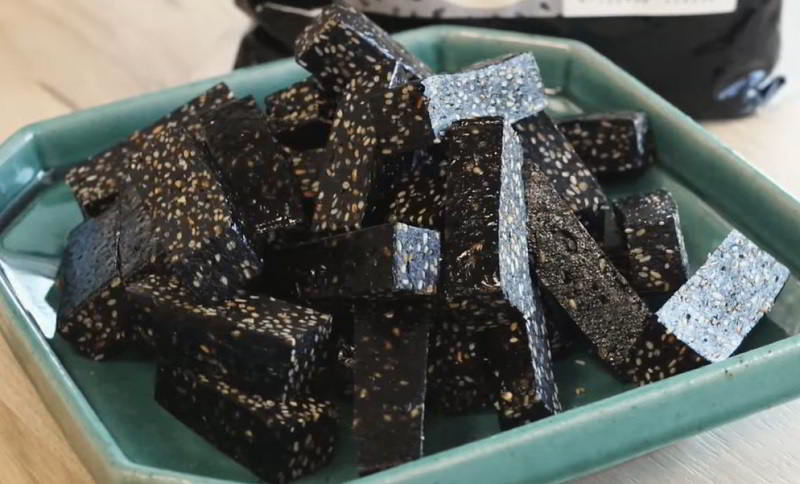
Sesame seed candy, sometimes known as sesame halva, embodies a delightful confection created by combining sesame seeds with sugar or honey, expertly pressed into either bars or balls. Its popularity spans from the Middle East across South Asia to East Asia, captivating taste buds with its rich sesame flavor and varied textures, ranging from chewy to crisp.
Referred to as Hei Zhima Su in Chinese, this sweet treat traditionally features a blend of black sesame seeds, offering a distinctive depth of flavor. Nuts like peanuts, almonds, and walnuts, as well as dried fruits such as raisins and goji, are often incorporated, adding layers of taste and texture.
Whether enjoyed as a nostalgic snack or a cherished treat during festive occasions, sesame seed candy captures the essence of cross-cultural sweetness, showcasing the versatility of sesame in culinary traditions across regions, including the Middle East, South Asia, and East Asia.
Tshuah-Ping
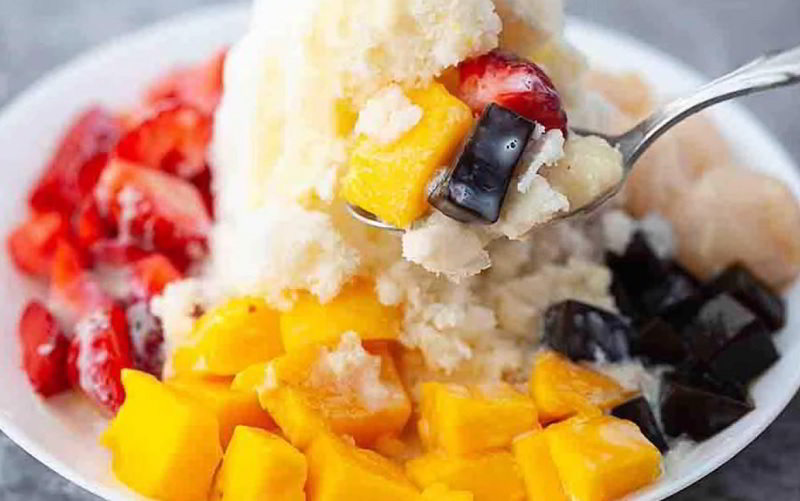
Tshuah-ping, also known as Baobing or Tsua bing, stands as a delightful shaved ice dessert with a fascinating journey from its introduction in Taiwan under Japanese rule to its widespread popularity in Greater China and regions with significant Overseas Chinese communities like Malaysia and Singapore. Particularly cherished in Taiwan, where it has evolved into the variation called xuehua bing, this dessert takes the traditional shaved ice concept to new heights by using milk instead of water for the ice.
The heart of this dessert lies in a generous mound of finely shaved ice adorned with an array of toppings. Common choices include sugar water, condensed milk, adzuki beans, mung beans, tapioca balls, and seasonal fruits, adding a burst of freshness. Mango baobing tantalizes taste buds in the summer, while strawberry baobing offers a winter treat.
Originally crafted by hand with a mallet or blade, modernization has introduced machines, resulting in finer, thinner ice shavings. Tshuah-ping showcases the fusion of tradition and innovation, making it a beloved and refreshing treat enjoyed across diverse regions.
Almond Tofu
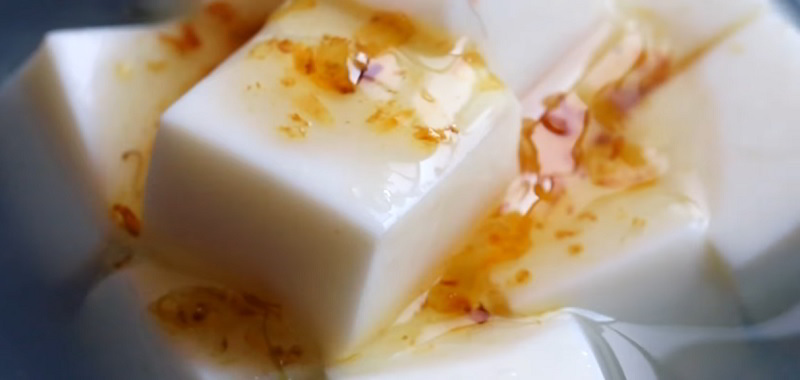
Almond tofu, a delicately textured and jellied dessert, emerges from a delightful blend of apricot kernel milk, agar, and sugar. This Chinese-originated dessert has transcended borders, capturing the palates of regions like Hong Kong, Japan, Malaysia, Singapore, and Hawaii, establishing a sweet presence akin to the French blancmange.
The term "tofu" in almond tofu doesn't refer to soybean-based tofu but implies a "tofu-like solid." Drawing parallels with other East Asian dishes like Chinese yúdòufu and Japanese gomadōfu, this nomenclature showcases a common naming convention.
Apricot kernel milk, a key ingredient, is sometimes confused with almond milk due to the visual and taste resemblance of apricot kernel to almond. Despite this potential confusion, almond tofu continues to charm dessert enthusiasts with its soft and pleasing consistency, epitomizing the artful fusion of ingredients that has traveled beyond its Chinese roots to captivate taste buds in various corners of the world.
Ang Ku Kueh
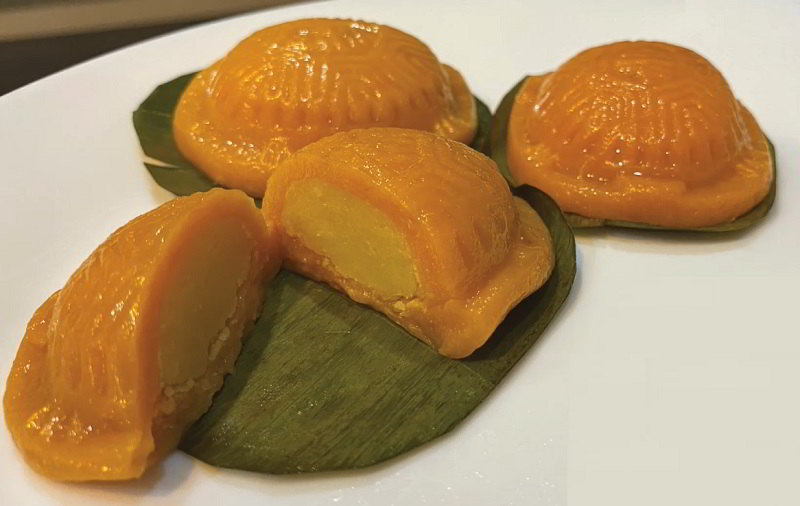
Ang ku kueh, colloquially known as red tortoise cake, stands out as a petite Chinese pastry, showcasing a tender, glutinous rice flour skin enfolding a sweet center. Fashioned to resemble a tortoise shell, it nestles atop a square banana leaf, traditionally presenting a red hue and offering a chewy, sticky texture.
The distinctive tortoise shape carries cultural significance, rooted in the Chinese belief that consuming tortoises brings longevity, good fortune, and prosperity. During key celebrations like Chinese New Year, these auspicious treats become offerings to Chinese deities, symbolizing blessings and longevity. Additionally, they mark significant life events, such as a newborn's first month or an elderly person's birthday, emphasizing the wishes for the child's prosperity and the elder's long life.
Beyond China, red tortoise cakes maintain their cultural importance, becoming integral to Chinese festivals in regions with substantial Sinophone communities, notably in Southeast Asia. Evolving with modern times, these delectable pastries are no longer confined to special occasions, finding a place in everyday culinary enjoyment and becoming readily available in pastry shops and bakeries.
Jiuniang
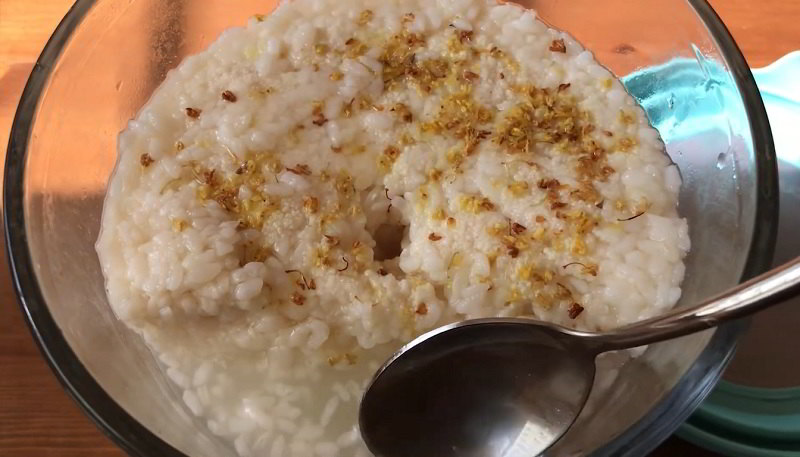
Jiuniang, a delectable treat in Chinese gastronomy, is akin to a sweet, pudding-esque dish, alternatively recognized as sweet wine or sweet rice wine. Its composition features partially digested rice grains suspended in a saccharified liquid, offering a subtle alcoholic content of 1.5–2% alongside a hint of lactic acid (0.5%). The intricate preparation involves fermenting glutinous rice using a starter, jiuqu, containing either Rhizopus oryzae or Aspergillus oryzae, often complemented by the addition of yeast and bacteria.
This sweet concoction undergoes a fascinating alchemical transformation during fermentation, resulting in a delightful combination of flavors and textures. The slight alcohol content contributes to its unique character, distinguishing it from conventional desserts. Jiuniang holds a cherished place in Chinese culinary traditions, with its consumption extending to various occasions and celebrations. Whether relished as a comforting dessert or enjoyed during festive gatherings, this sweet rice wine stands as a testament to the intricate artistry and diverse flavors deeply embedded in Chinese culinary heritage.
Lotus Seed Paste
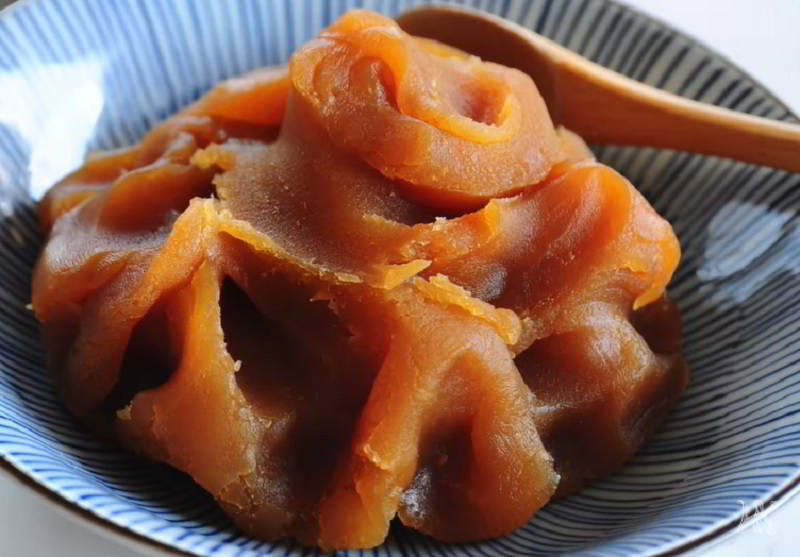
Lotus seed paste, a coveted Chinese dessert ingredient derived from dried lotus seeds, is a culinary gem esteemed for its luxurious quality. In Chinese gastronomy, preparing lotus paste is an artful process, requiring meticulous steps to transform dried lotus seeds into a velvety delight.
Most Chinese cooks further refine the lotus paste by dry cooking it over heat, blending it with caramelized sugar and vegetable oil. This method yields a tan-colored paste with a satiny sheen, offering a rich, sweet, and silky texture complemented by a subtle caramel fragrance. Some cooks opt for an additional step, treating the dried lotus seeds with a lye solution to expedite the cooking process.
The applications of lotus paste are diverse, finding a prominent place as a filling for mooncakes, baozi, and various sweet pastries. Additionally, it graces the interiors of lotus seed buns, a popular dim sum item. Despite the increased expense associated with lotus seeds, commercially crafted lotus pastes may integrate white kidney bean paste as a supplementary element. This blending results in a spectrum of variations spanning from lighter to darker hues, each contributing to a unique and delightful taste experience.
Mahua
-1709708132.jpg)
Mahua, also known as Fried Dough Twist, is a traditional Chinese delicacy made from dough and deep-fried in peanut oil, resulting in its distinctive shiny and golden appearance. This time-honored treat has a history spanning thousands of years, deeply rooted in various regional traditions. With a texture that is both dense and crisp, Mahua offers a versatile canvas for a range of flavors, from sweet to spicy.
Found throughout China, Mahua holds special significance in the culinary culture of Tianjin, a northern Chinese city where it is considered a signature food. The diverse preparation methods and flavor profiles associated with Mahua make it a popular and cherished snack, enjoyed by people in different regions as part of their culinary heritage. The enduring popularity of Mahua speaks to its adaptability and the enduring appeal of its unique combination of taste and texture.
Bingfen
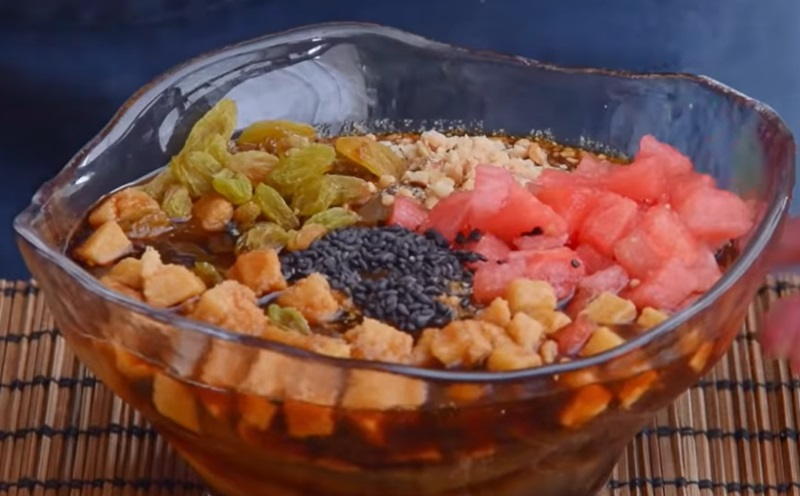
Bingfen, commonly known as ice jelly, is a distinctive Chinese dessert originating from the culinary traditions of Southwest China, particularly in provinces like Sichuan, Guizhou, and Yunnan. This delightful treat is a bowl of chilled, transparent jelly crafted from the seeds of the Nicandra physalodes plant. Often consumed as a street food, bingfen gains popularity, especially during the scorching summer months, for its cooling and refreshing properties.
The jelly itself possesses a unique texture—slightly crunchy, offering a pleasant contrast to its cold and soothing base. Toppings such as haw flakes and wolfberries add layers of flavor, contributing to the overall sweet and tart harmony. Bingfen reflects the diversity of Chinese culinary practices, with regional variations showcasing the cultural richness of different provinces.
The popularity of bingfen extends beyond its regional origins, making it a beloved dessert enjoyed throughout China. Its accessibility as a street food underscores its widespread appeal, and the dessert stands as a testament to the creativity and variety found in Chinese sweet treats. Whether relished as a local specialty or embraced in different regions, bingfen remains a symbol of the diverse and delightful offerings within Chinese dessert culture.
Hong Dou Tang
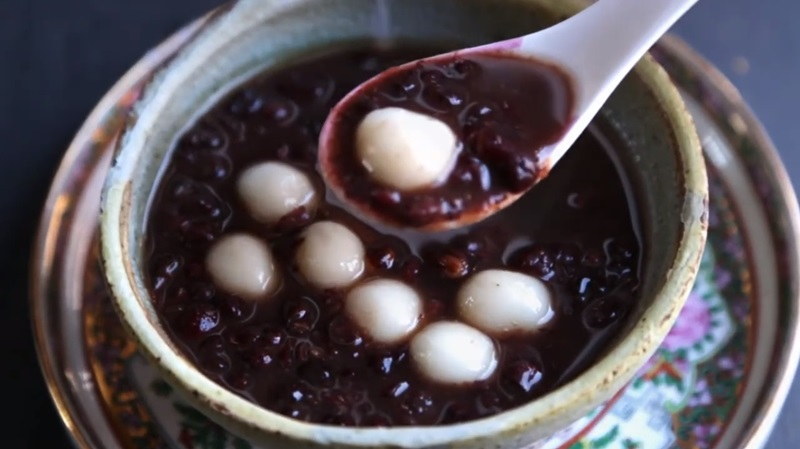
Hong dou tang, known as Chinese red bean soup, holds a cherished place in Chinese cuisine as a beloved dessert. This comforting delicacy is crafted by simmering red beans, water, and sugar until they amalgamate into a smooth, creamy soup boasting a vibrant red hue. The process begins by soaking the beans overnight and subsequently cooking them to achieve a soft and tender texture. The addition of sugar imparts a delightful sweetness that complements the natural flavors without overpowering them.
Variations of this soup may include the addition of glutinous rice balls or lotus seeds, enhancing both its texture and taste. Hong dou tang is a versatile dish enjoyed either hot or cold, making it a popular choice served after meals or during special occasions and festivals. Its simplicity and heartwarming nature contribute to its widespread appeal, symbolizing the sweetness and comfort deeply embedded in Chinese culinary traditions.
Black Sesame Soup

Black sesame soup, also known as sesame tong sui, stands as a widely appreciated Chinese dessert, prominently featured across China. Traditionally served hot, especially in Cantonese cuisine where it takes the form of tong sui, akin to a sweet soup with a thicker consistency resembling Western pudding. The fundamental ingredients include rice, black sesame seeds, and water, with sugar added to achieve the desired level of sweetness.
This dessert often incorporates tangyuan, glutinous rice balls, to add a delightful chewy element to the velvety soup. Black sesame soup is not only enjoyed in its traditional liquid form but can also be conveniently purchased in powder form for easy preparation.
Celebrated for its rich flavor and heartwarming qualities, black sesame soup has become a beloved part of Chinese culinary culture. Its popularity extends beyond China, resonating with those who appreciate the unique combination of nutty sesame, the comforting warmth, and the subtle sweetness that defines this classic dessert.
Osmanthus Cake
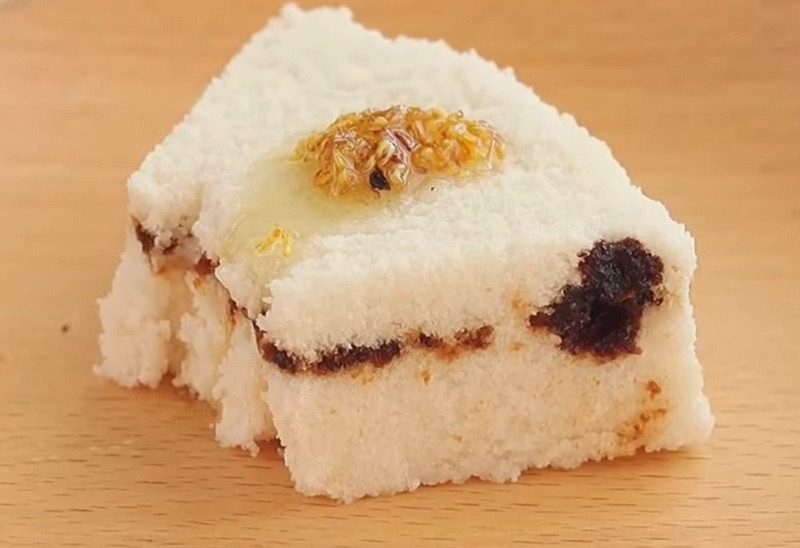
Osmanthus cake, a classic sweet-scented Chinese pastry, unfolds a delightful blend of flavors and textures, showcasing the artistry of Chinese dessert making. Crafted from a harmonious mix of glutinous rice flour, honey, sweet-scented osmanthus, and rock sugar, this delicacy captivates with its crystal-clear appearance and soft, waxy consistency.
The distinctive aroma of sweet-scented osmanthus infuses the cake with a fragrant and floral essence, creating a sensory experience that resonates with traditional Chinese flavors. The use of glutinous rice flour contributes to the pastry's soft and slightly chewy texture, elevating its overall appeal.
Osmanthus cake is not merely a treat for the taste buds; it also embodies cultural significance, with osmanthus being a revered flower in Chinese traditions. The combination of honey and rock sugar brings a balanced sweetness that complements the floral notes, making it a popular choice for those seeking a refined and aromatic dessert.
Whether enjoyed as a delightful snack or served during special occasions, Osmanthus cake stands as a testament to the rich tapestry of Chinese pastry craftsmanship, offering a unique and memorable indulgence for dessert enthusiasts.
Put Chai Ko
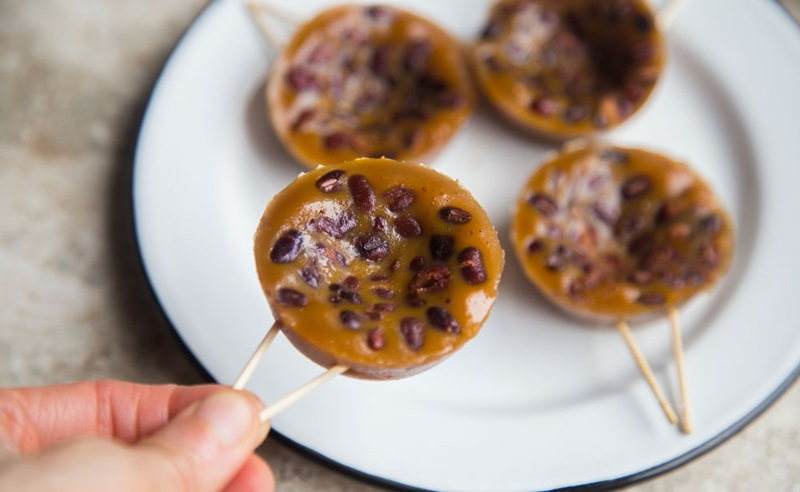
Put chai ko, a cherished street snack in Hong Kong, is a small pudding cake that captivates palates with its delightful sweetness. Despite its soft texture, this confection holds a sturdy shape, showcasing its culinary skill beyond being just a dessert. Made from a mixture of white or brown sugar, long-grain rice flour, and a touch of wheat starch or cornstarch, this delicious treat sometimes includes red beans for an added flavor dimension.
The process involves pouring the batter into porcelain bowls and steaming them until they reach perfection. Once cooled, the cakes are served at room temperature, providing a delightful indulgence for those seeking a taste of Hong Kong's lively food scene. Traditionally, vendors used bamboo skewers to delicately release the cake, but now, most Put Chai Ko are conveniently packaged in plastic bags for eager consumers to enjoy at their leisure.
Double Skin Milk
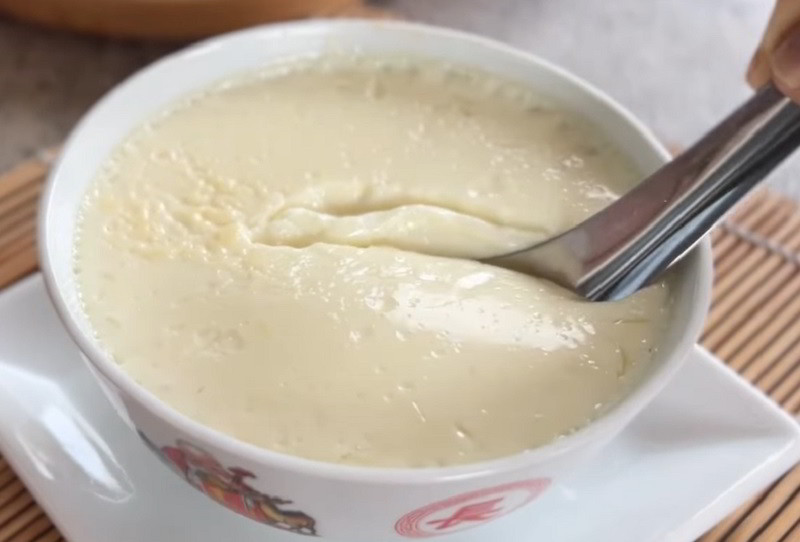
Double skin milk, a luscious Chinese dessert originating from Shunde, Guangdong, stands out as a velvety delight with a unique dual-layered texture reminiscent of panna cotta. The crafting of this indulgent treat involves a delicate combination of milk, egg whites, and sugar, resulting in a creamy custard with two distinct skins.
The initial skin forms during the cooling process of boiled milk, while the second develops as the cooked custard cools. Traditionally made with buffalo milk, chosen for its higher fat content, the dessert achieves a silky smoothness that sets it apart. The unconventional use of milk from the swamp buffalo, despite its lower yield compared to cow's milk, adds to the distinctive character of double skin milk.
Celebrated in culinary hubs like Macau, Shenzhen, Shunde, Guangzhou, and Hong Kong, this dessert has become a beloved part of Chinese dessert culture. Its smooth, dual-layered consistency and rich flavor profile make double skin milk a sought-after delicacy, showcasing the skillful fusion of ingredients that results in a memorable and indulgent culinary experience.
Mango Pudding
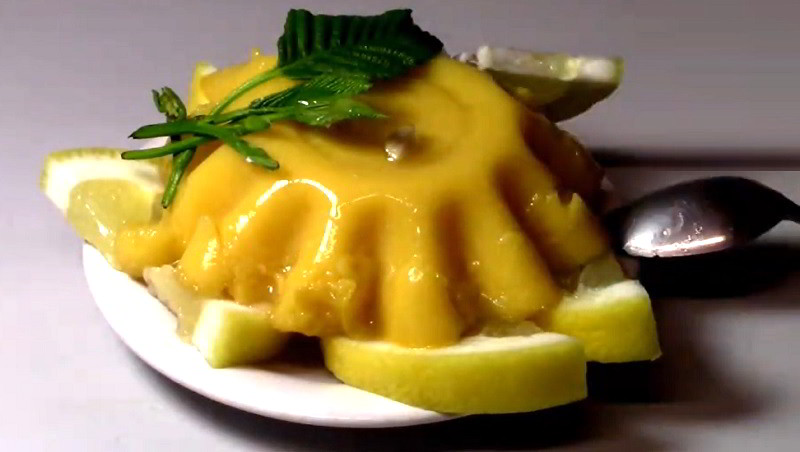
Mango pudding is a cherished dessert deeply ingrained in the culinary heritage of Hong Kong, blending British and Chinese influences seamlessly. This popular delicacy has crossed borders, establishing its presence in countries such as Thailand, Singapore, Malaysia, and Macau, and securing a coveted spot on dim sum menus worldwide.
Crafted with precision, the traditional recipe calls for a mix of ripe mangoes, evaporated milk, agar or gelatin, and sugar, resulting in a rich and creamy consistency. Vibrant fruits like berries, strawberries, mango, or kiwifruit often adorn this delectable treat, adding a pop of color. Served cold, mango pudding provides a cool and delightful treat.
In some Chinese eateries, the pudding is shaped like a fish, symbolizing good fortune in Chinese tradition, adding a playful element. Commercially produced versions of mango pudding, while still capturing its essence, may use mango essence, gelatin, or agar instead of fresh mangoes. This versatile dessert perfectly embodies a fusion of tastes and cultural elements, cementing its status as a beloved global culinary delight.
Ginger Milk Curd
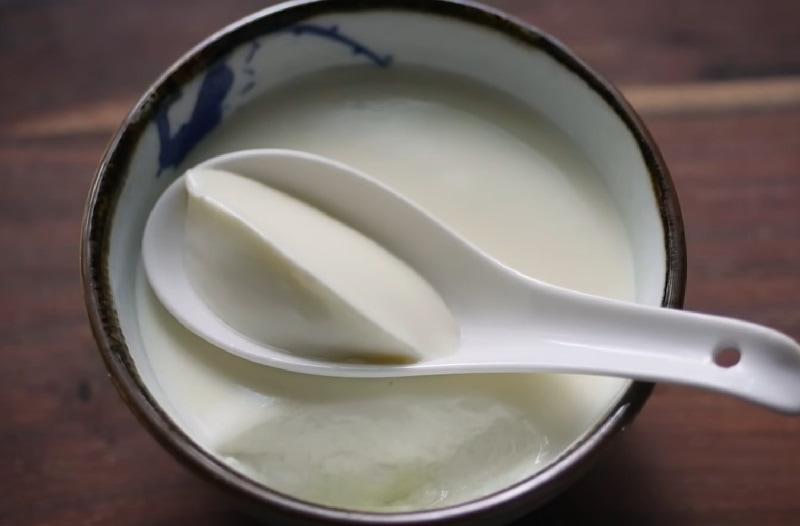
Ginger milk curd, also known as ginger-juice milk curd, ginger milk, or ginger milk pudding, is a traditional Chinese dessert originating from Shawan Ancient Town in the Panyu District of Guangzhou, Guangdong Province, southern China. This delightful treat is crafted using a blend of milk, ginger, and sugar, with the original recipe calling for water buffalo milk.
Known for its lusciously smooth texture, ginger milk curd is created through a meticulous process. The milk is gently warmed, and ginger juice is introduced, prompting a coagulation process that results in a velvety pudding. The use of water buffalo milk imparts a distinct flavor profile, enhancing the dish with richness and complexity.
In addition to its culinary appeal, ginger milk curd is esteemed for its potential health benefits, as ginger is traditionally linked to various medicinal properties. This dessert has become a cherished delicacy, appreciated not just for its delicious flavor but also for the cultural and culinary heritage it represents, particularly within the dynamic food scene of southern China.
Snow Skin Mooncake
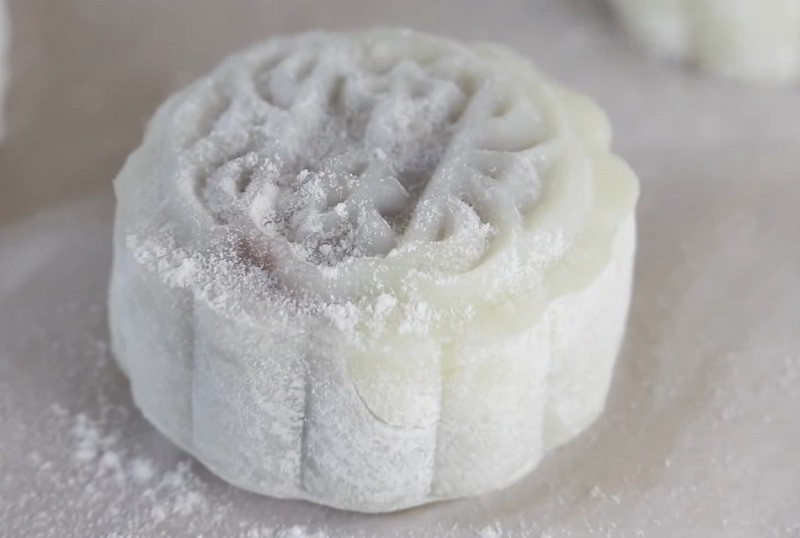
Snow skin mooncakes, also acknowledged as ice skin mooncakes, crystal mooncakes, or snowy mooncakes, represent a distinctive Chinese treat traditionally enjoyed during the Mid-Autumn Festival. Originating in Hong Kong, these unbaked mooncakes have garnered popularity and are now relished across diverse regions, including Mainland China, Singapore, Malaysia, Taiwan, Macau, and Indonesia.
Characterized by their unique preparation, snow skin mooncakes deviate from traditional counterparts by avoiding the oven. In contrast to room-temperature traditional mooncakes, these treats are typically enjoyed when chilled. The concept of snow skin mooncakes emerged in the 1960s, introduced by a pioneering Hong Kong bakery. The innovation arose from concerns about the high sugar and oil content in traditional Cantonese mooncakes, featuring salted duck egg yolks and lotus seed paste. In pursuit of a lighter alternative, the bakery embraced fruit fillings and reduced oil content, resulting in a mooncake with lower fat content, appealing to health-conscious customers' preferences.
Fa Gao
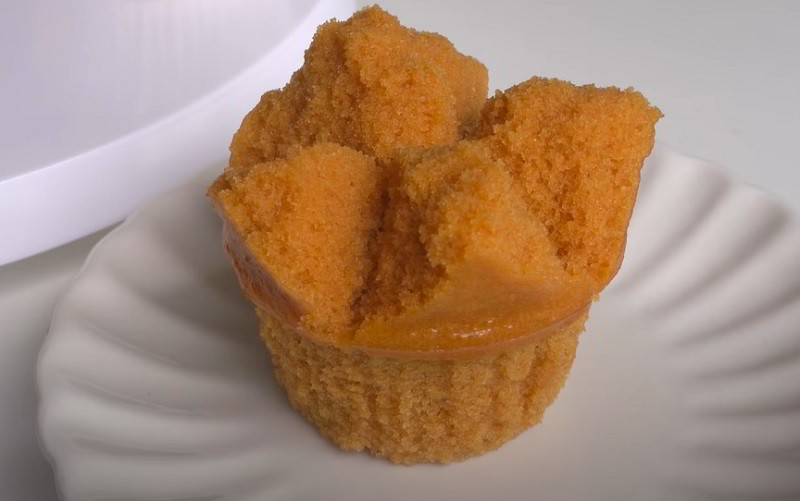
Fa Gao, known as the "prosperity cake," is a revered delicacy in Chinese culture, particularly during the festive celebrations of Chinese New Year. This delightful dessert, resembling a steamed cupcake, carries profound significance for families seeking good luck and prosperity in the upcoming year. The name "Fa Gao" originates from the Chinese word "fa," symbolizing prosperity and wealth.
Crafted from a blend of fermented rice flour, sugar, and water, the cake boasts a soft and fluffy texture. A notable feature is its vibrant top, achieved through the use of food coloring or natural ingredients like beetroot juice or pandan extract. Each color holds symbolic meaning – red for good luck, pink for romance, yellow for wealth, and green for harmony. Beyond visual appeal, these vivid hues contribute to the festive ambiance.
Fa Gao is commonly exchanged as a gift during Chinese New Year, believed to bring good fortune and prosperity throughout the year. The act of steaming the cake further symbolizes the ascent of luck and success, making Fa Gao a cherished tradition and a sweet embodiment of well-wishes for the festive season.
Sweet Potato Soup
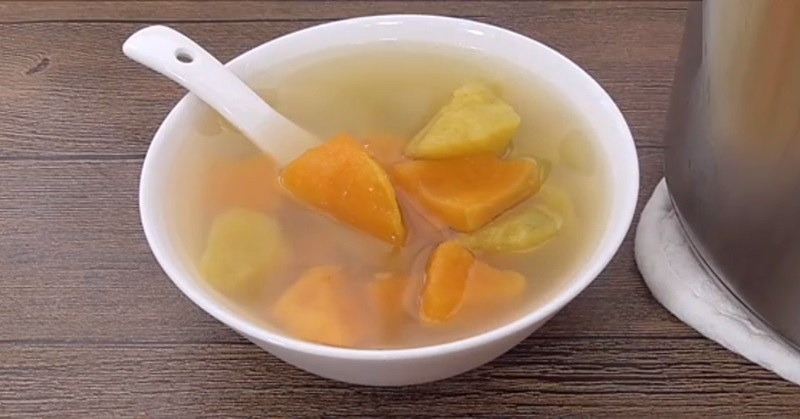
Hailing from Southern China, sweet potato soup is a delightful dessert celebrated for its thin consistency and robust flavor. The preparation is uncomplicated, involving the boiling of sweet potatoes, rock candy, and ginger over an extended period. Beyond its delicious taste, this soup is a treasure trove of health benefits.
Packed with essential vitamins, minerals, and antioxidants, sweet potatoes contribute significantly to overall well-being. Their rich fiber content adds an extra layer of nourishment, making the soup not just a flavorful treat but also a satiating and wholesome meal. The simplicity of its ingredients belies the depth of its nutritional value, showcasing the synergy between taste and health in Chinese culinary traditions. Whether enjoyed for its comforting warmth or the nutritional boost it provides, sweet potato soup stands as a testament to the harmony of flavor and wellness ingrained in the culinary heritage of Southern China.
Fried Milk
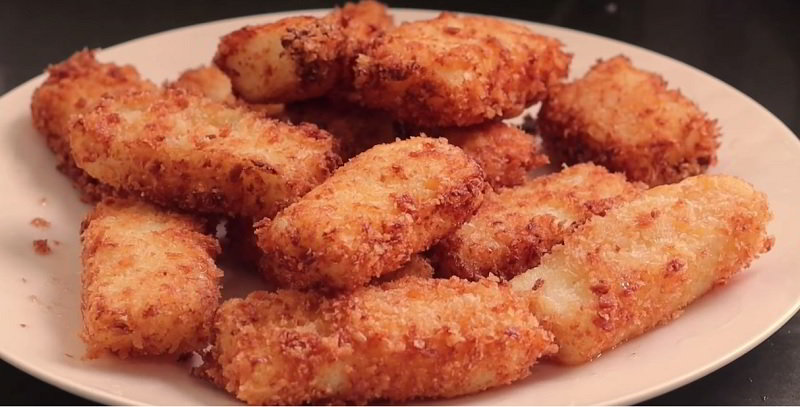
Fried milk, a dessert originating from the Shunde District of Guangdong within Cantonese cuisine, is a culinary marvel that captivates the palate with its contrasting textures and rich milky flavor. The dish presents itself as a golden and crisp exterior encapsulating a soft, velvety white interior.
The preparation involves a meticulous process where milk is infused with thickness through the addition of flour, cornstarch, and eggs. This creamy concoction is then coated with breadcrumbs, creating a protective layer that transforms into a delightful crispiness when deep-fried to perfection. The result is a harmonious marriage of textures and flavors, offering a unique sensorial experience.
What sets fried milk apart is its ability to blend the simplicity of ingredients into a sophisticated dessert that balances the creamy essence of milk with the satisfying crunch of the fried coating. This dish serves as a testament to the culinary ingenuity found in Cantonese cuisine, where each bite tells a story of meticulous craftsmanship and an unwavering commitment to culinary delight.
Chinese Almond Biscuit

The Chinese almond cookie, a classic in Chinese pastry, boasts a distinctive heritage rooted in its origins in Guangdong, Macau, and Hong Kong, as well as its widespread presence in overseas Chinese bakeries. Initially crafted without almonds, the name hails from the original biscuit's almond-like shape, evolving over time to include almond as a common ingredient.
These delectable treats, now often round-shaped, have become a staple in the realm of Chinese pastries. The Chinese almond cookie, characterized by its petite size and lack of filling, stands out for its delightful crumbliness. While the biscuit's evolution may have altered its appearance, its essence remains embedded in the rich culinary traditions of southern China.
Renowned for its simplicity, the Chinese almond cookie delights the palate with a balance of sweetness and texture. Whether enjoyed as a standalone treat or paired with tea, its ubiquity in Chinese bakeries both at home and abroad underscores its enduring popularity and cultural significance in the realm of Chinese desserts.
Sago Soup
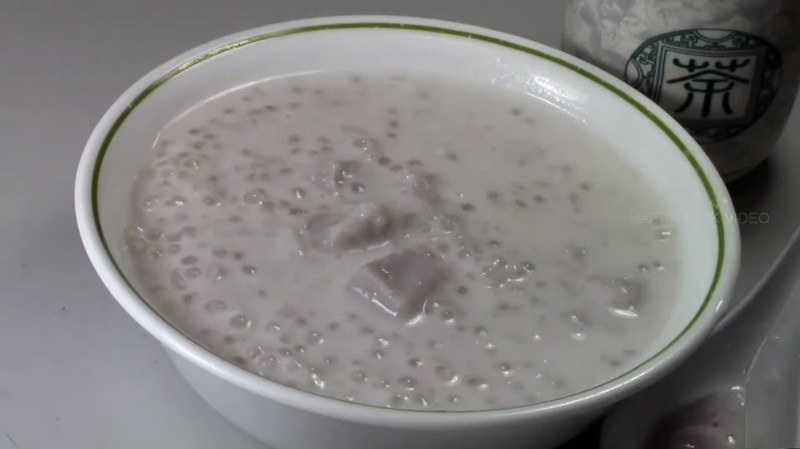
Chinese sago soup is a well-liked and invigorating dessert soup originating from southern China. It is crafted from sago pearls, small see-through balls derived from the starch of the sago palm tree. The soup possesses a jelly-like texture and is typically sweetened with rock sugar or honey. To prepare Chinese sago soup, start by soaking the sago pearls in water to soften them. Next, boil them in a pot until they become transparent and tender. The cooked sago pearls are then mixed with a flavorful broth made from ingredients like coconut milk, pandan leaves, and sugar. Some variations of the soup may include additional ingredients such as mango or lychee for added sweetness and texture. Chinese sago soup is often enjoyed chilled and serves as a delightful dessert or snack, particularly during hot summer months. Its smooth and jelly-like consistency, along with the subtle sweetness of the broth, creates a light and refreshing treat.
Taro Purée
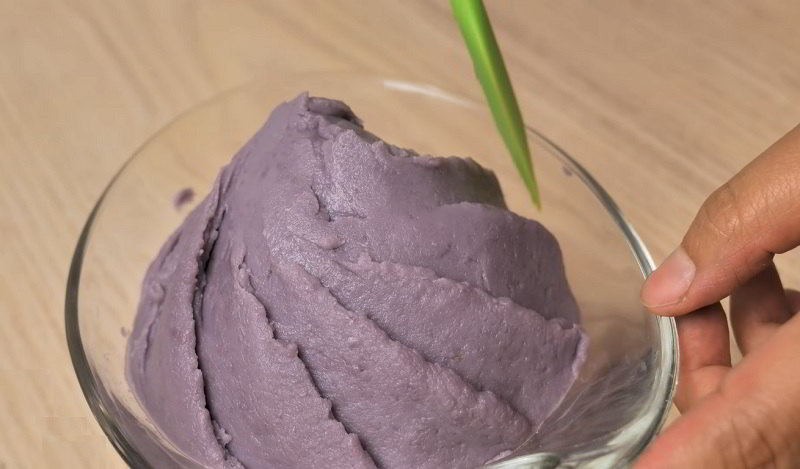
Fujian cuisine is renowned for its delicate flavors and focus on using fresh ingredients. One of its popular dishes is Taro purandée, a creamy and smooth dessert that is both satisfying and comforting. To prepare this dish, fresh taro is peeled, boiled, and mashed to create a soft and velvety texture. The purandée is then sweetened with sugar and sometimes enriched with coconut milk for a more flavorful experience. The result is a luscious and slightly sweet dessert that is perfect for those with a sweet tooth. Taro purandée can be enjoyed warm during colder months or chilled for a refreshing treat in the summertime. It can be eaten on its own or paired with ingredients like sweet beans or glutinous rice balls to add texture and variety.
With its smooth consistency, subtle sweetness, and unique taro flavor, Taro purandée is a beloved dish in Fujian cuisine, appreciated for its simplicity and satisfying taste. Whether enjoyed as a dessert or a sweet snack, this delightful dish is sure to please the palate of any food lover.
Lo Mai Chi
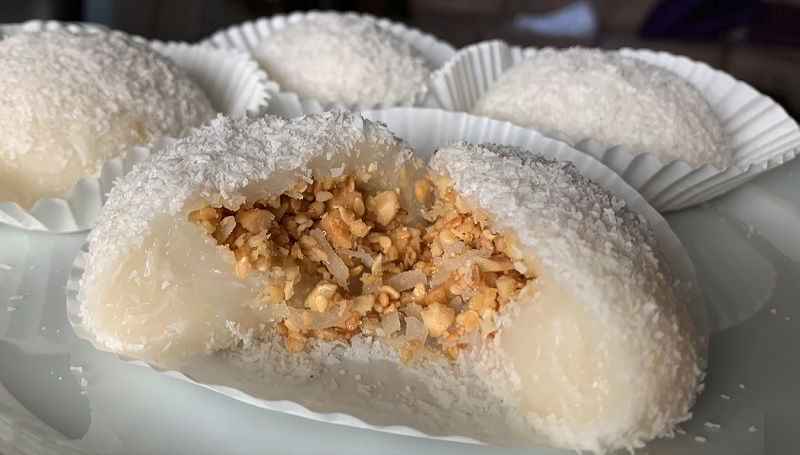
Lo mai chi, a cherished Chinese pastry also known as nuomici in Mandarin, has become an iconic delicacy in Hong Kong and Chinatown bakery shops globally. Often referred to as glutinous rice dumpling, this pastry has evolved over time to include modern variations like green tea and mango flavors, showcasing its versatility.
The heart of lo mai chi lies in its glutinous rice ball, enveloped by a delicate rice flour dough. The exterior may be adorned with a dusting of dried coconut, adding a layer of texture to the indulgent treat. The sweet fillings, a hallmark of this pastry, offer a delightful contrast to the chewy exterior. Options abound, with classic choices like sugar with coconut and crumbled peanuts, black sesame seed paste, and red bean paste gracing the palate.
With its roots in traditional Chinese cuisine, lo mai chi has transcended cultural boundaries, drawing inspiration from global culinary influences. Its enduring popularity underscores its ability to adapt to modern tastes while preserving the essence of a time-honored treat.
Banana Roll
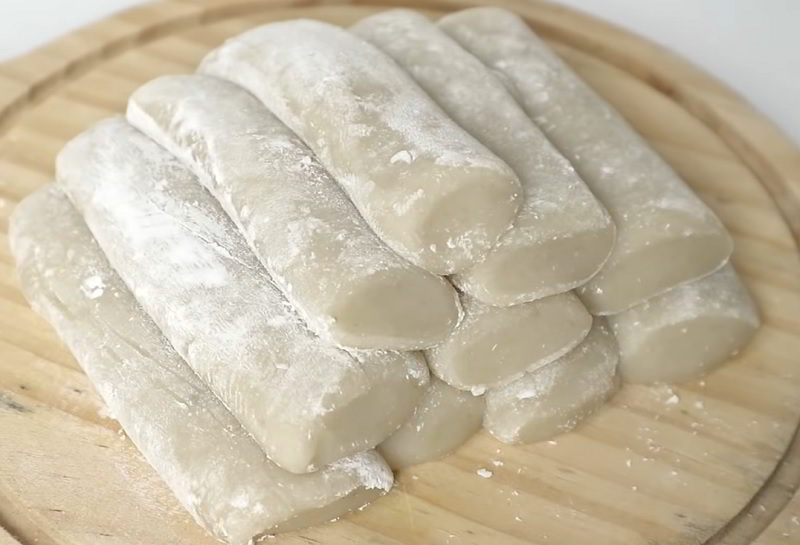
Banana roll, a popular Chinese pastry prominent in Hong Kong and occasionally gracing the shelves of overseas Chinatowns, is a delectable treat with diverse variations. The soft, glutinous rice-based pastry is shaped into a circular tube or flat object, resembling the size of an adult index finger, and infused with the delightful essence of banana oil.
This pastry's versatility shines through its diverse ingredients, offering a range of delightful options depending on the locale. Some variations feature a tempting cinnamon swirl filling, adding a layer of aromatic warmth to the banana-flavored goodness. In other instances, the filling may consist of finely diced, very ripe bananas, capturing the essence of fresh fruit sweetness. For those leaning towards the more traditional, a classic red bean paste filling occasionally makes an appearance, adding a touch of nostalgia to the modern palate.
Whether enjoyed as a nostalgic comfort or embraced as a contemporary delight, the banana roll stands as a testament to the adaptability and enduring appeal of Chinese pastries in the global culinary landscape.
Yuanxiao
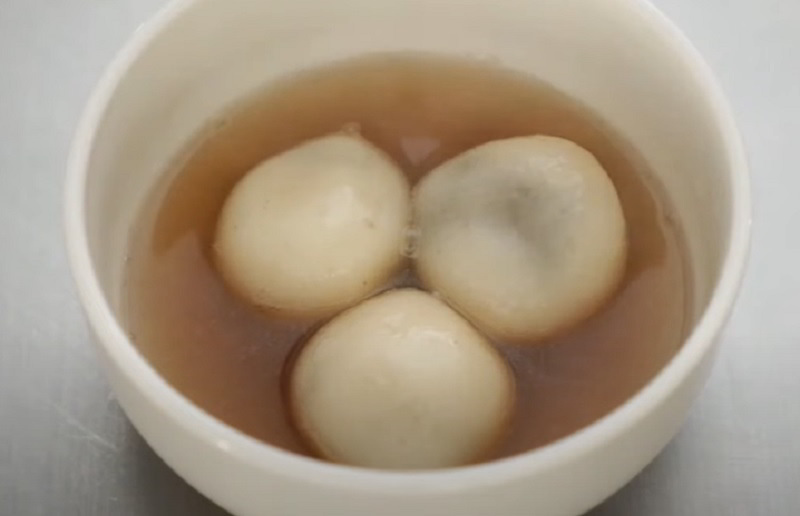
Yuanxiao, delightful dumplings crafted from glutinous rice flour, stand as a cherished treat enjoyed during the Lantern Festival, marking the fifteenth day of the Chinese New Year. Diverging from the southern counterpart, tangyuan, yuanxiao take center stage primarily in Northern China, contributing to the regional tapestry of festive cuisine.
These dumplings encapsulate sweetness, with fillings of sesame or peanut powder and sugar, or the ever-popular sweet red bean paste. Skillfully prepared, they find their way into a soup, creating a harmonious blend of flavors and textures. Unlike tangyuan, yuanxiao boast a dry and soft exterior, providing a delightful contrast to the sweetness within.
The meticulous process involves crafting solid fillings, cut into small, delectable pieces. The filling undergoes a transformation, dipped into water and coated with dry glutinous rice flour repeatedly until achieving a round shape. This labor of love results in a treat with a short shelf life but enduring cultural significance, embodying the spirit of celebration and togetherness during this festive season.
Coconut Bar
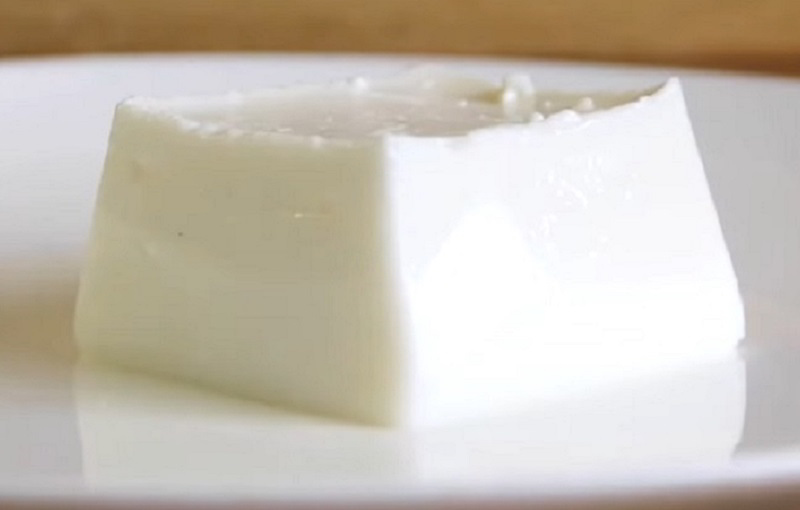
Coconut bar, a delectable dim sum dessert, graces the tables of Hong Kong, Taiwan, Southern China, and Chinatowns worldwide. This sweet delight, reminiscent of a pudding, delights the palate with its unique characteristics. Unlike traditional gelatin, the coconut bar boasts a soft, gelatin-like texture but distinguishes itself with an opulent white hue.
Elevating its status as a refrigerated treat, this coconut-infused creation offers a refreshing departure from the ordinary. The marriage of sweetness and coconut essence brings a tropical twist to the dim sum experience. Sometimes affectionately termed coconut pudding, this chilled delight showcases the versatility and creativity found in Chinese culinary traditions.
Each bite of the coconut bar encapsulates a delightful blend of flavors, a harmonious balance between the richness of coconut and the delicate sweetness within. Its presence on dim sum carts and dessert menus reflects its popularity and the culinary craftsmanship embraced across various regions. Whether savored in bustling Hong Kong tea houses or enjoyed in the quiet corners of overseas Chinatowns, the coconut bar stands as a testament to the enduring appeal of Chinese desserts worldwide.
Deuk Deuk Tong
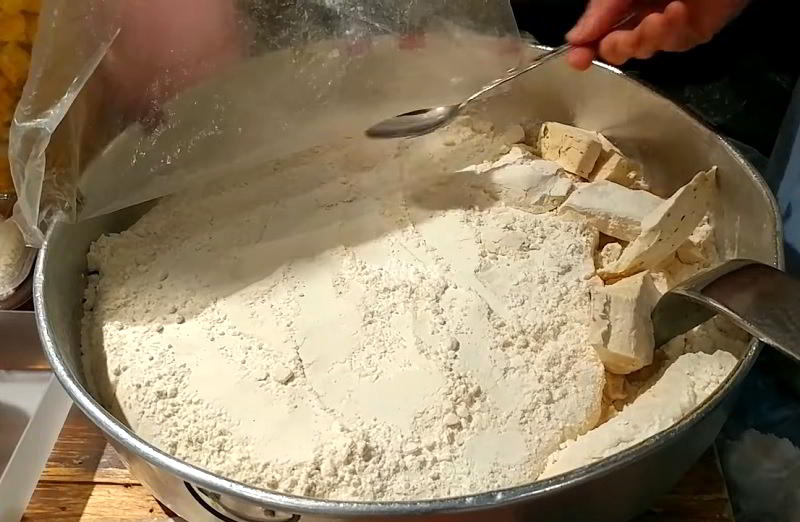
Deuk deuk tong, colloquially known as ding ding tong, stands as a cherished traditional candy hailing from the vibrant streets of Hong Kong. This confection takes the form of a hard maltose candy infused with delightful sesame and ginger notes, creating a flavor symphony that resonates with the city's culinary heritage.
Crafting this sweet involves a meticulous process, beginning with the melting of maltose. Sesame and ginger join the mix, and the concoction undergoes a rhythmic stirring. Before it solidifies, the candy is deftly placed on a metal stick, pulled into a slender line, and gracefully coiled into a plate-shaped form.
The unique name "Deuk Deuk Tong" reflects the playful chiselling process employed by street hawkers. Using flat chisels to break the candy into pieces creates a distinctive noise, attracting the attention of curious children eager to indulge in this sweet delight. In Cantonese, "deuk" signifies chiselling, and "tong" translates to candy.
To cater to evolving tastes, modern iterations include enticing flavors such as mango, banana, coconut, chocolate, and strawberry. Deuk Deuk Tong thus remains not only a nostalgic symbol of Hong Kong's streets but also a testament to its ability to adapt and captivate generations with sweet memories.
Crystal Cake
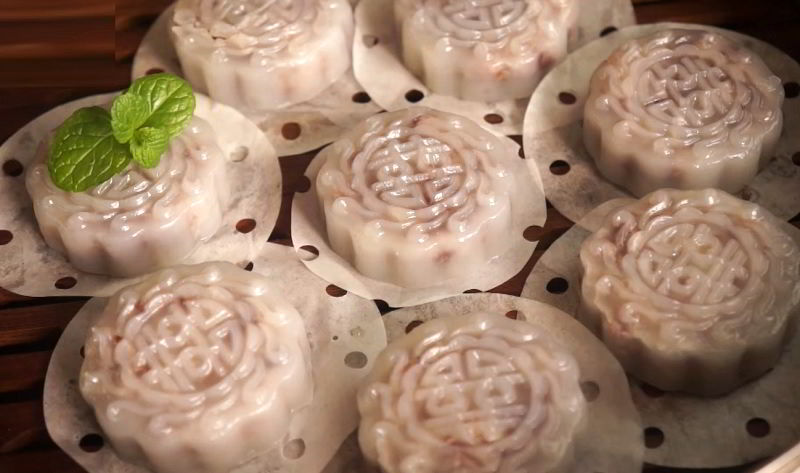
Crystal cake, a time-honored dessert originating from Weinan city in eastern Shaanxi, China, boasts a rich legacy spanning over eight hundred years, dating back to the Song Dynasty. Its inception in Xiagui marked the genesis of a culinary tradition that gracefully traversed the region.
The name "crystal cake" finds its inspiration in the captivating filling that adorns this delicacy, exhibiting a glittering and translucent quality reminiscent of crystal. This symbolic moniker alludes to the dessert's dazzling allure.
Crafting the crystal cake involves a meticulous blend of ingredients. The crust, composed of starch, wheat flour, and oil, forms the foundation, while the filling weaves together lard, granulated sugar, pounded rock candy, and an ensemble of candied fruits and nuts. This harmonious fusion results in a delightful juxtaposition of textures and flavors.
In southern China, a variant of crystal cake emerges, featuring small pastries with a wheat starch-based translucent crust. These dainty treats house a sweet bean paste filling, offering a unique interpretation of the beloved crystal cake tradition. Across its storied history, crystal cake stands as a testament to the artistry and culinary finesse preserved in the heart of Shaanxi's cultural heritage.
Chinese Flaky Pastry
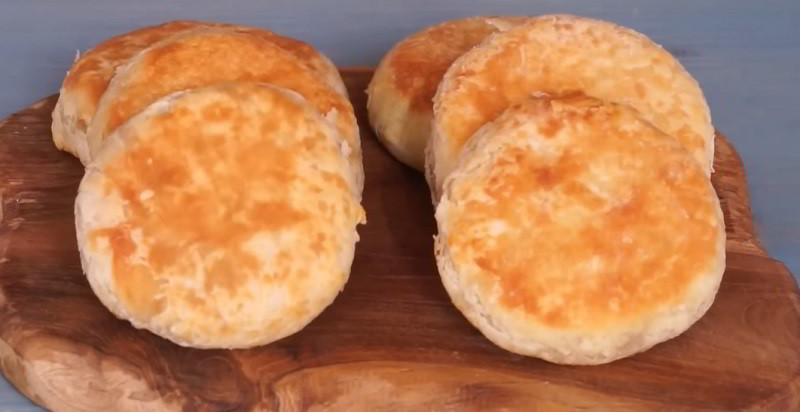
Chinese flaky pastry, a versatile unleavened delicacy, plays a pivotal role in the creation of traditional Chinese pastries, commonly referred to as subing or soubeng in Cantonese. This pastry artistry unfolds in two distinctive styles, each contributing to the rich tapestry of Chinese culinary heritage.
Huaiyang-style pastry, hailing from the Huaiyang culinary tradition, takes center stage in crafting delicacies like the renowned Shanghainese 'crab shell' pastries. Characterized by its exquisite layers and delicate flakiness, this style of pastry showcases the culinary finesse embedded in the regional gastronomy.
On the other hand, Cantonese-style pastry, originating from the vibrant Cantonese culinary landscape, becomes the canvas for pastries such as the beloved sweetheart cakes. Known for its unique texture and flaky layers, this style of pastry reflects the creativity and artisanship inherent in Cantonese dessert-making.
Whether it's the intricate layers of a crab shell pastry or the delectable flakiness of a sweetheart cake, Chinese flaky pastry stands as a testament to the diverse and exquisite world of Chinese pastries, inviting enthusiasts to savor the rich heritage encapsulated in every delightful bite.
Red Bean Cake
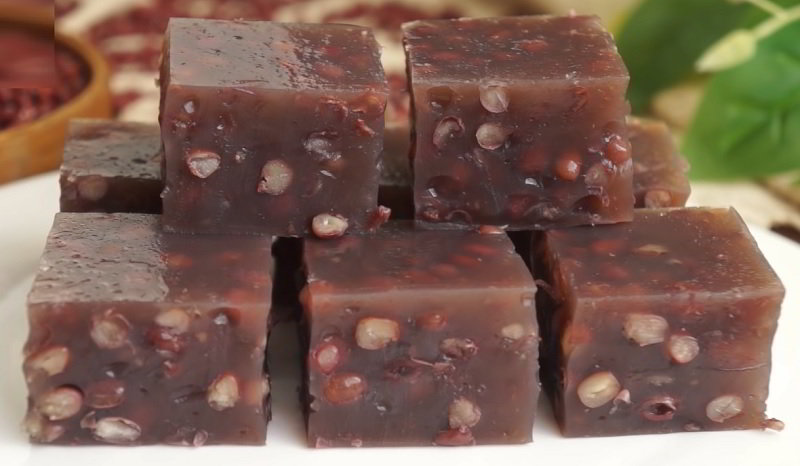
Red bean cake, a delectable Chinese confection, boasts a variety of regional adaptations, with notable versions emerging from places like Taiwan. One prominent iteration is the Cantonese-style red bean cake, distinguished by its unique preparation method.
In the creation of Cantonese red bean cake, a hardened red bean paste, having undergone a freezing process, takes center stage. This paste, sweetened to perfection, becomes the luscious filling enveloped within the cake. To enhance its texture and visual appeal, the cake is adorned with a sprinkle of sesame seeds. The result is a resilient square block, presenting a delightful balance of sweetness and nuttiness.
While Cantonese red bean cake is known for its toughness, it stands as a year-round treat in some regions, enjoyed at any time, while in others, it holds a special place during specific traditional Chinese festivities. This versatile dessert not only showcases the regional diversity in Chinese culinary traditions but also offers a harmonious blend of flavors and textures for those who savor its culinary charm.
Egg Tong Sui

Egg tong sui, a cherished classic in Cantonese cuisine, holds a unique position as a sweet counterpart to the savory egg drop soup. Unlike its savory relative, this dessert-oriented tong sui is deeply rooted in traditional and home-style cooking, making it a rare find on restaurant menus in China.
The preparation of egg tong sui involves a thoughtful combination of ingredients and culinary techniques. The dish typically features a base of sweet soup, and its distinctive element is the incorporation of eggs, creating a delicate and silky texture. The eggs are gently dropped into the sweet soup, allowing them to form luscious ribbons, contributing both richness and a unique mouthfeel.
Given its less common appearance in dining establishments, egg tong sui is often associated with family kitchens and homemade warmth. The simplicity of its preparation, coupled with the sweet and comforting notes, makes it a nostalgic and beloved dessert for those who appreciate the traditional flavors of Cantonese cuisine. This dessert not only satisfies the sweet tooth but also offers a glimpse into the cultural significance of home-cooked delights within Chinese culinary traditions.
Zaotang
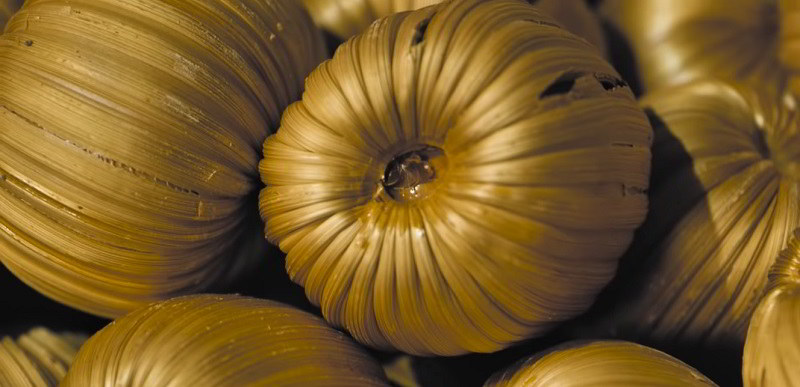
Zaotang, also known as "candy for the Kitchen God," stands as a unique and culturally significant confection in China, traditionally used as an offering during the Kitchen God Festival, typically observed around the twenty-third day of the twelfth lunar month, just preceding Chinese New Year. Its alternative names, Guandong tang or Tanggua, are often associated with its distinct shapes.
This candy is a seasonal delight, exclusively crafted during the Kitchen God Festival, a period coinciding with freezing weather in most parts of China. The production and sale of Zaotang are carefully timed to ensure that the candies maintain their integrity, avoiding melting. What sets Zaotang apart is its composition, primarily consisting of maltose and various grains like barnyard millet, corn, rice, millet, or barley malt. Glutinous proso millet, owing to its ability to create a sticky mixture more efficiently, is often the preferred choice.
Zaotang's preparation involves a meticulous cleaning process for the grains, ensuring the removal of bran and impurities. The resulting candy boasts tiny bubbles, contributing to a distinctive crispy and fragrant taste that captures the essence of this traditional Chinese treat.
Sou
-1709102322.jpg)
Sou, a versatile dried flaky Chinese pastry, holds a prominent place in various Chinese cuisines, showcasing its adaptability and diverse flavors across different regions. One of the most prevalent versions, char siu sou, takes center stage in dim sum restaurants, offering a delightful combination of the flaky pastry and flavorful char siu filling. Beyond this, the pastry's versatility shines with other variations like century egg and lotus seed paste sou, creating a spectrum of tastes that cater to different preferences.
While Hong Kong and Singapore in Asia are key locations to savor these treats, they occasionally grace the offerings of Chinatowns in different parts of the world. In Shanghai cuisine, a plethora of dried sou options awaits, ranging from green bean sou and peanut sou to walnut sou, each presenting a unique blend of textures and tastes. The appeal of these pastries extends beyond mere consumption, with boxed forms making popular souvenirs for those seeking to share the flavors of Chinese cuisine or cherish the memories of culinary exploration.
Aiwowo
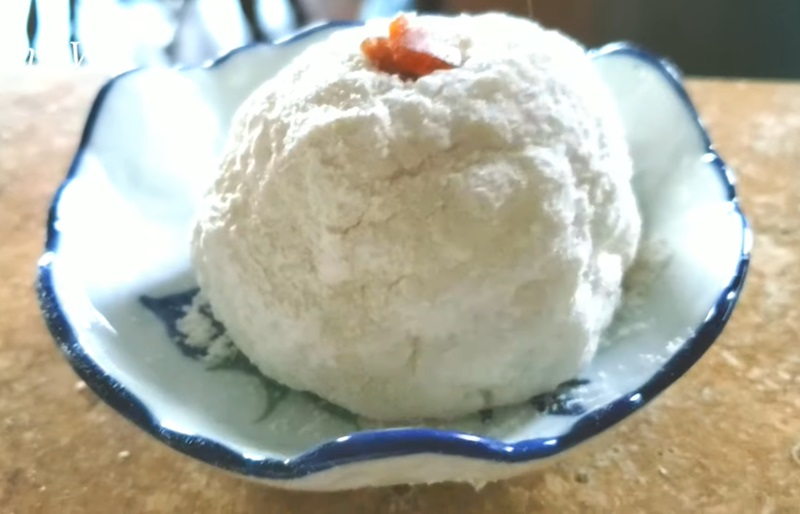
Aiwowo, a revered traditional dessert hailing from Beijing, China, has a rich history dating back to the Ming dynasty, gaining recognition during the reign of the Wanli Emperor. This delectable treat, a staple in Hui restaurants, graces the culinary scene from Lunar New Year through late summer and early autumn. Aiwowo often shares the festive table with Niangao during Lunar New Year celebrations, symbolizing auspicious growth and improvement each year.
Resembling charming snowballs, Aiwowo features an outer layer crafted from glutinous rice, rolled over steamed hard flour. The delicate artistry continues with a variety of sweet fillings, including sugar, sesame, apricots, plums, and yam. To enhance the flavor profile, some versions incorporate hawthorn on top, introducing a delightful hint of sourness to complement the sweetness. Beyond its delightful taste, Aiwowo captures the essence of Chinese culinary traditions, becoming a cherished companion through festive seasons and a testament to the country's rich gastronomic heritage.
Jewish Almond Cookie
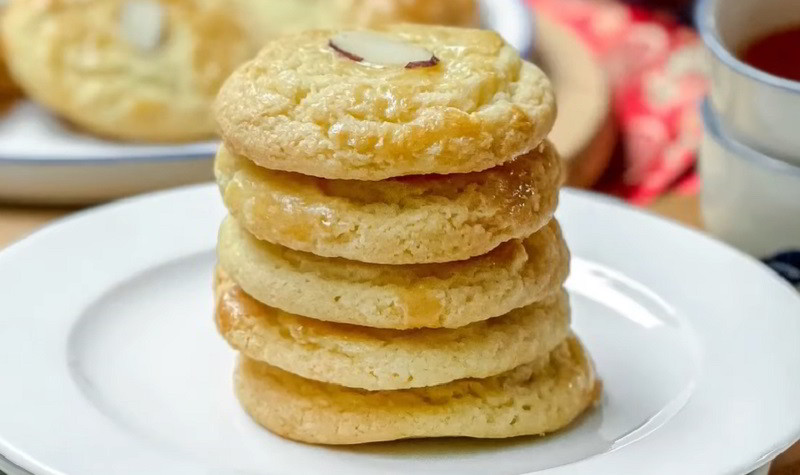
The Jewish Almond Cookie, also recognized as a Chinese cookie, stands out as a beloved treat with a unique cross-cultural appeal. This delightful cookie, popularized in Jewish culinary traditions, is a staple often found gracing the counters of Jewish delis and eateries. It seamlessly weaves together the culinary threads of Jewish and Chinese heritage, creating a delectable fusion of flavors that captivates cookie enthusiasts.
At its core, the Jewish Almond Cookie boasts a rich almond flavor, deriving its distinctive taste from the generous use of almonds in various forms. Whether ground into flour or delicately sliced, almonds contribute a delightful nuttiness and texture to the cookie. The result is a confection that is both crisp and chewy, offering a satisfying bite with every mouthful.
What adds to the intrigue of the Jewish Almond Cookie is its association with Chinese cookies, showcasing the interconnectedness of global culinary influences. This unique blend of Jewish and Chinese culinary elements not only reflects the diversity of flavors but also serves as a delightful reminder of the rich tapestry woven by different cultural cuisines. Whether enjoyed as a sweet treat during celebrations or as a simple indulgence, the Jewish Almond Cookie remains a testament to the culinary harmony born from diverse traditions.
Orange Jelly Candy
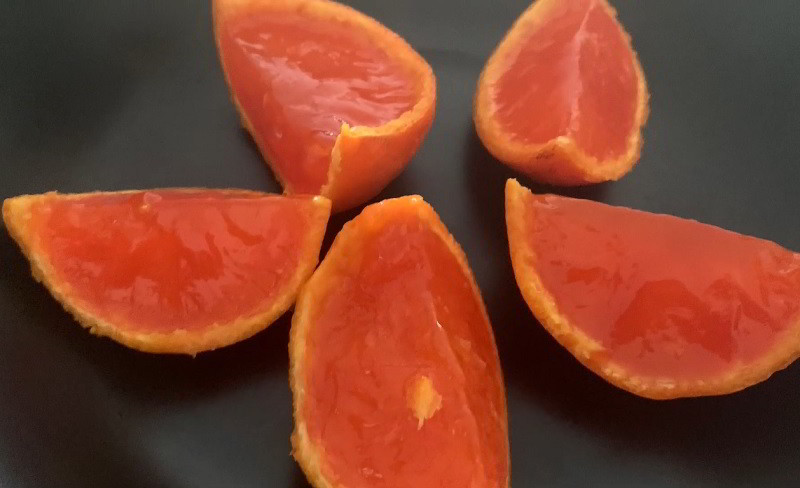
Orange Jelly Candy, distinctive finger-sized sticks of soft and delectable jelly confection, have carved a niche for themselves among the array of sweet offerings in Hong Kong's food specialty stores. While a considerable portion of candies in Hong Kong is sourced globally, including imports from mainland China, Europe, and the United States, Orange Jelly Candy stands out as a local creation, crafted within the vibrant culinary landscape of Hong Kong itself.
These sweet delicacies, with their vibrant orange hue and irresistible texture, are a testament to the local confectionery artistry that has thrived in Hong Kong. The candy landscape in the region is not merely influenced by international imports but also enriched by the creative endeavors of local manufacturers.
The finger-sized format adds a playful touch to the candy, making it a favorite choice for those seeking a delightful and convenient treat. With the global influence evident in many Hong Kong candies, Orange Jelly Candy serves as a charming reminder of the region's ability to blend global flavors with its distinctive local touch, creating a candy experience that resonates with the unique tastes of Hong Kong residents and visitors alike.
Cut Cake
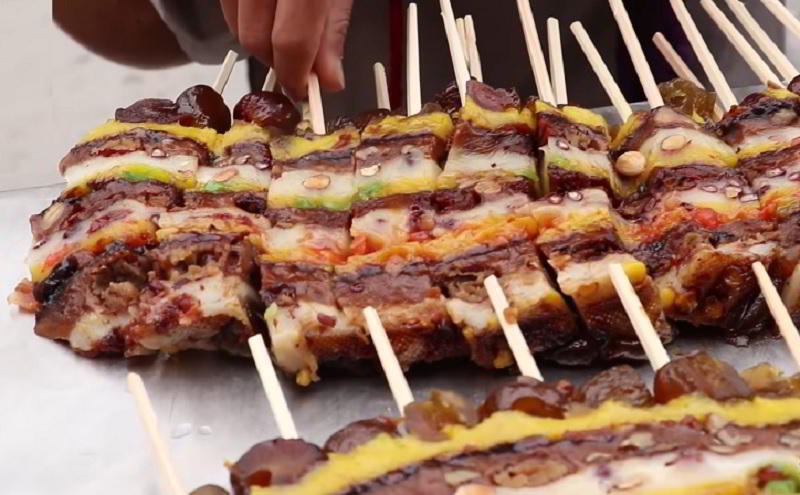
Cut Cake, also known as Maren Candy, stands as a unique confectionery rooted in the culinary traditions in Xinjiang Hotan. This delectable treat is crafted with a blend of corn syrup, flour, candied fruit, and nuts, creating a sweet and satisfying flavor profile that reflects the rich cultural tapestry of the region.
The name "Cut Cake" derives from its presentation in large blocks, with slices cut from the block for individual servings. This traditional method of preparation adds a communal and artisanal touch to the treat, emphasizing its connection to local culinary practices.
However, it's worth noting that Cut Cake purchased from Uyghur peddlers has faced challenges related to size discrepancies, where slices larger than requested are cut, leading to disputes over purchases. This practice has unfortunately led to a tarnished reputation for this otherwise delightful treat.
The "Sky-high Price Cut Cake Incident" in Yueyang in December 2012 brought attention to the dynamics between cut cake peddlers and locals, highlighting the need for fair practices in the sale of this cherished Uyghur delicacy. Despite such incidents, Cut Cake remains a symbol of the region's culinary heritage, offering a unique and flavorful experience for those who indulge in its sweet and nutty goodness.
Black Sesame Roll
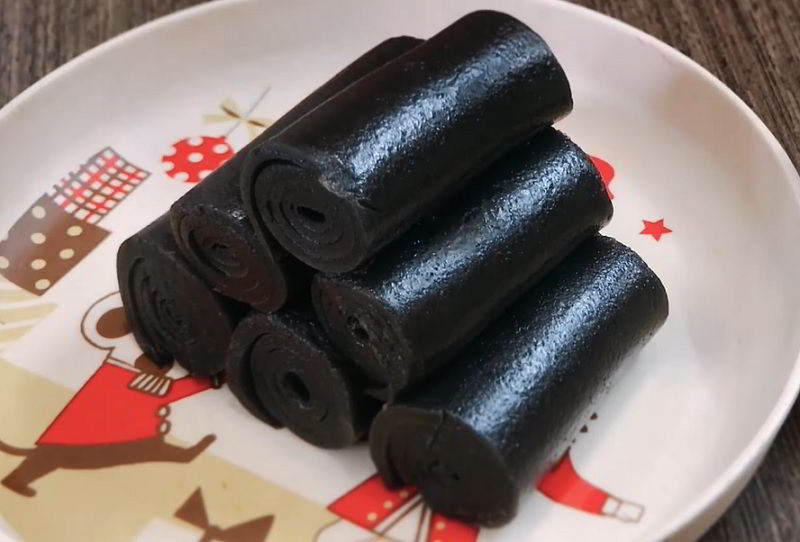
The Black Sesame Roll, a delightful refrigerated dim sum dessert originating from Hong Kong, graces tables in overseas Chinatowns, offering a sweet indulgence with its smooth and soft texture.
The meticulous preparation of this delectable treat involves the initial step of drying a thin layer of black sesame paste. This paste, rich in flavor and distinctively aromatic, undergoes a transformation into a delicate refrigerated sheet. The result is a harmonious marriage of sweetness and the nutty essence of black sesame.
The culinary artistry continues as these refrigerated sheets, now imbued with the essence of black sesame, are carefully rolled into individual servings, creating the iconic Black Sesame Roll. The smooth and soft texture of each roll unfolds a delightful experience with every bite, showcasing the skill and craftsmanship that goes into the creation of this beloved dim sum dessert.
Whether enjoyed in the bustling streets of Hong Kong or savored in distant Chinatowns, the Black Sesame Roll stands as a testament to the fusion of flavor and tradition, offering a sweet retreat for those with a penchant for delectable and artfully crafted desserts.
Yi Bua
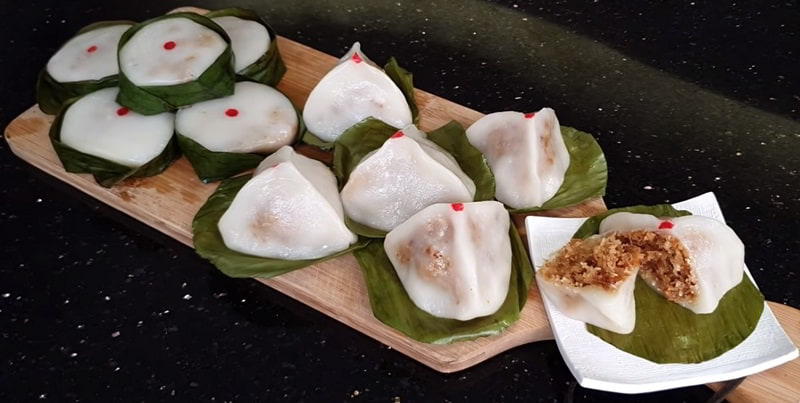
Yi Bua, a cherished Hainanese delicacy, stands as a traditional steamed dumpling encapsulating the essence of Hainanese culinary heritage. Also recognized by the name Kuih E-Oua, this delectable treat is meticulously crafted from glutinous rice flour dough, a testament to the culinary artistry embedded in its creation.
The heart of Yi Bua lies in its exquisite filling, a symphony of flavors featuring palm sugar-sweetened amalgamation of toasted sesame seeds, grated coconut, and crushed roasted peanuts. Encased within delicate sheets of banana leaves, meticulously pressed into an intricate fluted cup shape, each dumpling is adorned with a distinctive dab of red food coloring, adding both visual appeal and cultural significance.
This Hainanese kuih transcends mere gastronomy, finding its place in celebratory moments like weddings and a baby's full-moon celebration. Through its rich heritage and meticulous preparation, Yi Bua not only delights the palate with its sweet and nutty amalgamation but also serves as a cultural emblem, bringing forth the traditions and celebrations of Hainanese culinary customs.
Chongyang Cake
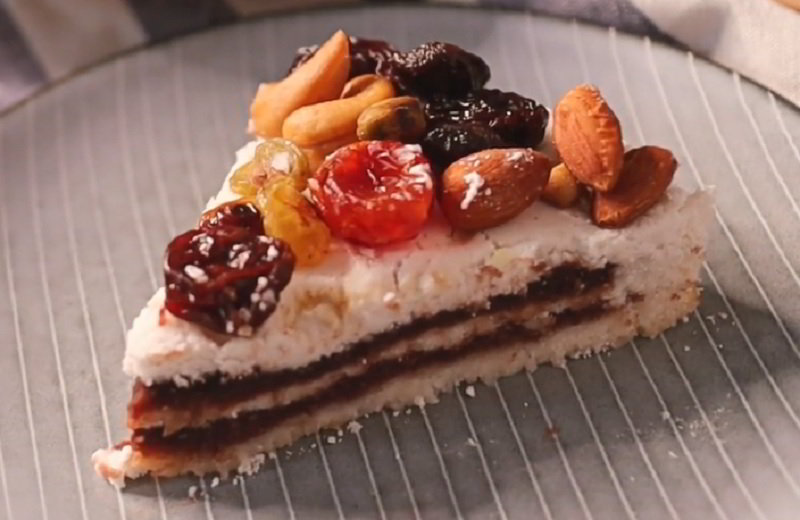
Chongyang Cake, a venerable treat associated with the Chongyang Festival, unfolds as a traditional delight with deep-rooted cultural significance. Crafted from a blend primarily composed of rice flour and sugar, this culinary masterpiece undergoes a meticulous process of baking and steaming. The resulting confection is adorned with thoughtful embellishments such as jujube, chestnuts, and almonds, enhancing both its visual allure and symbolic resonance.
The auspicious nature of Chongyang Cake transcends mere culinary pleasure, as its name in Chinese echoes that of "height." This linguistic connection imbues the cake with a profound layer of symbolism, signifying aspirations for elevated heights and good fortune. In the fabric of Chinese cultural traditions, Chongyang Cake emerges not just as a delectable treat but as a bearer of wishes for prosperity and success.
As families and communities come together to celebrate the Chongyang Festival, the presence of this intricately prepared cake becomes a testament to the enduring link between culinary customs and cultural beliefs, fostering a shared sense of joy and optimism during this auspicious occasion.
Funing Big Cake
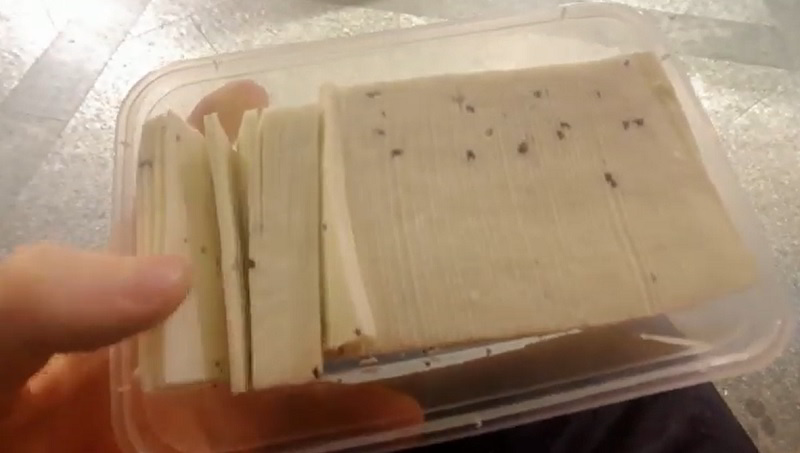
Funing Big Cake, a culinary treasure hailing from the historical tapestry of Funing County in Jiangsu province, China, stands as a testament to a rich culinary legacy dating back two millennia. This exquisite creation, versatile in its applications, can be savored as a tea cake or indulged in its fried variation.
Renowned as both the "Funing Big Cake" and the "Jade Belt Cake," each name carries its own enchanting myth, weaving a narrative that adds layers of mystique to this time-honored delicacy. One legend attributes the moniker "Jade Belt Cake" to the Qianlong Emperor, who, enamored by its taste, bestowed this regal name upon it. Another tale speaks of a tribute offered to the imperial palace, resulting in a promotion and the award of a jade belt to a fortunate official, forever intertwining the cake with tales of prosperity and accolades.
Crafted from traditional ingredients like white sugar, sticky rice, and refined lard, the Funing Big Cake has evolved over time to accommodate modern health preferences, occasionally substituting lard with vegetable oil. Garnished with delights like juglandis (walnuts) and pine nuts, this culinary marvel encapsulates not only a rich history but a flavorful journey through the cultural heritage of Funing County.
Xi Gua Lao
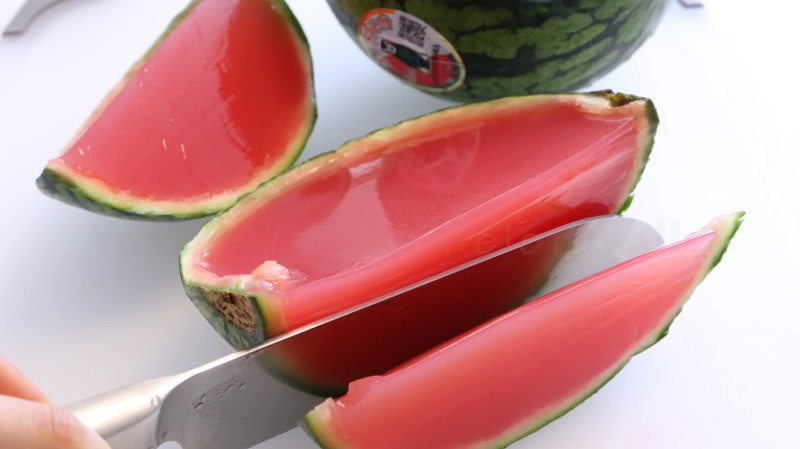
Xi Gua Lao, a hallmark of Beijing cuisine, emerges as a refreshing symphony for the senses, specifically crafted to beat the summer heat. This traditional dish takes the essence of summer's bounty, the watermelon, and transforms it into a thickened and chilled soup, offering a delightful respite during the sweltering months.
The artistry of Xi Gua Lao lies in its harmonious blend of simple yet flavorful ingredients. The key components include succulent watermelon, sugar, cherries, agar, and vanilla powder. The process begins by concocting a syrup infused with the sweet essence of vanilla and sugar, brought to life with the aid of agar.
Next, the vibrant watermelon takes center stage, crushed to extract its juicy nectar, which then intertwines with the luscious syrup. The amalgamation of these components results in a tantalizing mixture, carefully chilled until it achieves a delectable thickness. The final masterpiece is a cool, velvety soup, a symphony of sweetness and freshness that epitomizes the ingenuity of Beijing cuisine in transforming seasonal abundance into a culinary masterpiece. A sip of Xi Gua Lao is not merely a taste but a journey into the heart of summer's vibrancy, encapsulating the essence of Beijing's culinary heritage.
Pear-Syrup Candy
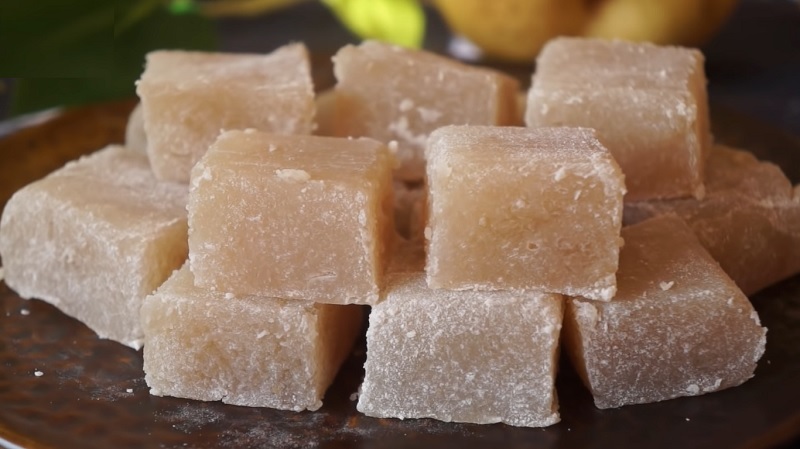
Pear-Syrup Candy, known as lígāotáng or líqīnggāo, embodies the rich cultural tapestry of the Jiangnan region in China, particularly celebrated for its historical significance in both medicine and confectionery. Originating from the eastern reaches of Jiangnan, this traditional gem was revered for its therapeutic properties, serving as a remedy to alleviate coughing, reduce sputum, and stimulate appetite.
The candy's transparent allure is crafted from a harmonious blend of pear juice, honey, and an assortment of herbs, carefully selected for their medicinal virtues. While it once played a pivotal role in traditional medicine, the evolution of medical science has seen its therapeutic use decline. However, the pear-syrup candy has gracefully transitioned into the realm of souvenirs and snacks, embodying the essence of Jiangnan culture.
In its modern incarnation, the candy stands as more than a confection; it is a testament to the region's heritage. The crystal-clear hue and meticulous blend of flavors encapsulate not only the traditional wisdom of Jiangnan but also the adaptability of its culinary treasures as they continue to captivate taste buds and hearts alike.
Dowry Cake
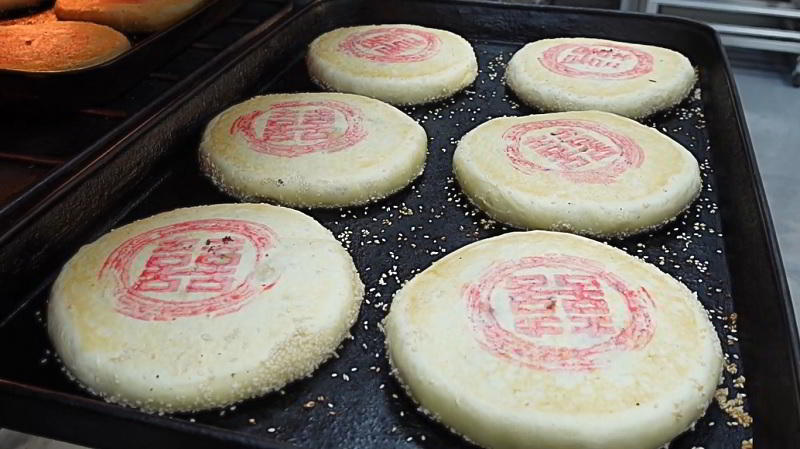
Marry Girl Cake, also known as Dowry Cake, intricately weaves tradition and taste in the tapestry of Chinese culinary heritage. Initially crafted as a ceremonial wedding gift, this cake has evolved into a classic Chinese pastry that transcends cultural shifts. While it once symbolized matrimonial customs, its significance has transformed, and today, it stands as a delectable testament to tradition.
This cake, often found in the bustling streets of Hong Kong and overseas Chinatowns, boasts a lightly sweetened sponge cake foundation, its simplicity masking the cultural richness it carries. The cakes, available in various shapes and sizes, are notably larger than typical pastries, making them a distinctive treat.
At its heart, the Marry Girl Cake reveals a luscious lotus seed paste, adding a layer of sweetness and texture that resonates with the pastry's historical roots. Beyond its initial role in weddings, the cake's enduring presence in contemporary settings showcases its ability to transcend time, inviting everyone to savor a slice of Chinese culinary history.
Song Gao
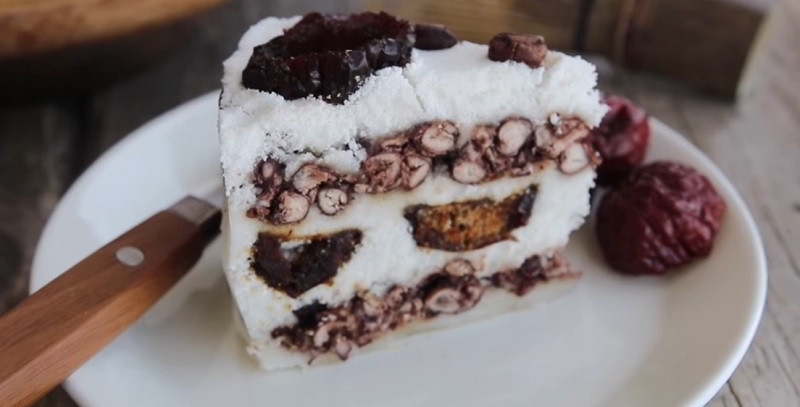
Sōng gāo, a delectable Shanghai snack, embodies the essence of simplicity and taste with its core ingredients of rice flour, sugar, and water. What sets it apart are the embedded azuki beans, both giant and conventional, contributing to the cake's distinctive texture and flavor.
The cake features sizable, pink-colored azuki beans, each about an inch in diameter, adorning the surface, while regular-sized azuki beans are nestled within the soft cake. Adding to its richness, a luscious red bean paste filling completes the ensemble. Prepared as a large, steamed round cake, sōng gāo is then thoughtfully partitioned into sections for ease of enjoyment.
Noteworthy for its cultural significance, this snack gained recognition beyond Shanghai, finding a place in the heart of Madame Chiang Kai-shek. Her affection for sōng gāo prompted its inclusion in the menu of the Grand Hotel of Taipei, a tradition upheld to this day. Thus, sōng gāo not only tantalizes the taste buds but also carries a historical legacy, representing the timeless allure of Shanghai's culinary contributions.
Wandouhuang
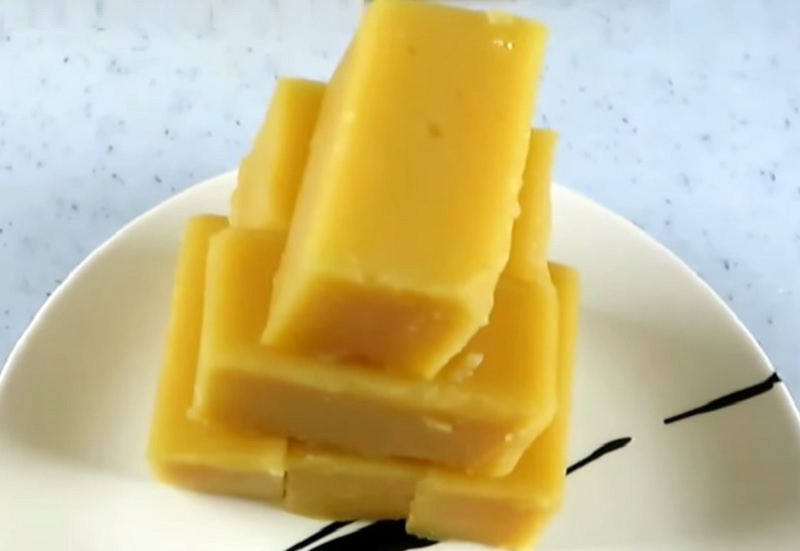
Wandouhuang, also known as Wandouhuanger, stands as a cherished traditional snack with roots deeply embedded in Chinese culinary heritage. Initially embraced by the Han population, this delectable treat found its way into the illustrious Forbidden City during the Qing Dynasty, gaining popularity and recognition.
Having gained fame in Beijing since the Ming Dynasty, Wandouhuang proudly holds its position as one of the city's quintessential traditional snacks. Characterized by a ginger- or saffron-colored, paste-like consistency, this cake boasts a subtle sweetness, offering a light and refreshing taste experience.
The essential components of Wandouhuang include yellow pea flour or yellow pea, sugar, and water, expertly combined to craft this classic spring delicacy. Historically associated with the Spring Temple Fair, Wandouhuang has transcended seasonal boundaries, becoming a delightful presence in restaurants across China throughout the year. This enduring treat captures the essence of China's culinary legacy, celebrating flavors that have stood the test of time and continue to bring joy to palates across the nation.
Sì
-1705421943.jpg)
Sì, a distinctive and traditional delicacy, takes center stage during the Winter Solstice festival in Fuzhou, Fujian Province, China, offering a unique twist in the realm of festive treats. Unlike its counterparts, the tangyuan, Sì is crafted into spherical wonders without any filling, embodying a simplicity that enhances its charm.
The meticulous process of creating Sì involves grinding glutinous rice into a fine powder, followed by a pressing technique that extracts excess moisture, resulting in a pliable yet dry consistency. The rice powder is then expertly rolled into spherical shapes, forming the foundation of this delightful dessert. To elevate its flavor profile, fried or even slightly burnt soybean powder, intricately blended with brown sugar, is generously sprinkled onto the glutinous rice spheres.
Consuming Sì during the Winter Solstice festival holds deep cultural significance in Fuzhou, where many believe that indulging in this treat brings about good fortune. This cherished tradition not only tantalizes the taste buds but also connects individuals to a cultural tapestry, enriching the celebration with the symbolism of prosperity and auspicious beginnings.
Chao Hong Guo
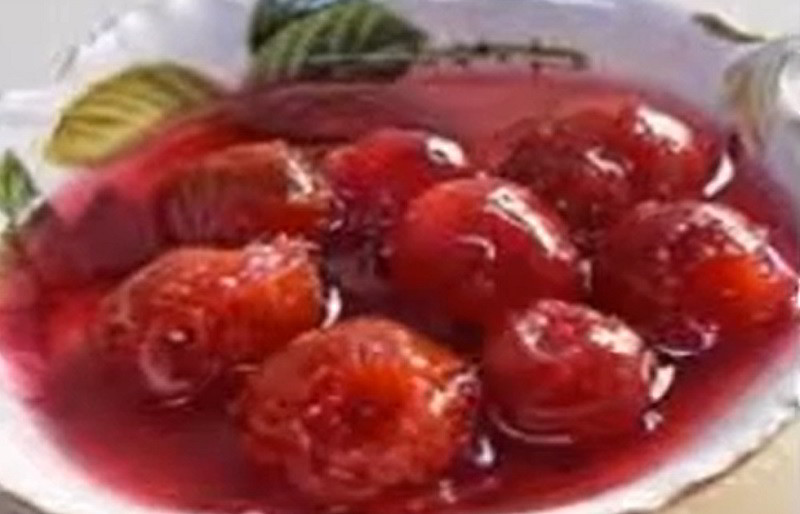
Stir-fried hawthorn, a classic in Beijing cuisine, showcases the culinary creativity of the region using Chinese hawthorn fruits. The dish highlights the fruit's natural tartness, enhanced through the stir-frying process, creating a delightful and tangy flavor.
A variation of this culinary innovation is found in hawthorn yogurt, where the stir-fried Chinese hawthorn fruits become a key ingredient blended into Nai Lao, a traditional yogurt. This fusion marries the distinctive sweetness of Nai Lao with the zesty notes of stir-fried hawthorn, resulting in a harmonious and refreshing dish that exemplifies Beijing's culinary diversity. Both dishes exemplify the artistry in utilizing local ingredients, transforming them into flavorful delights that contribute to the rich tapestry of Beijing's gastronomic traditions.
JingBaJian
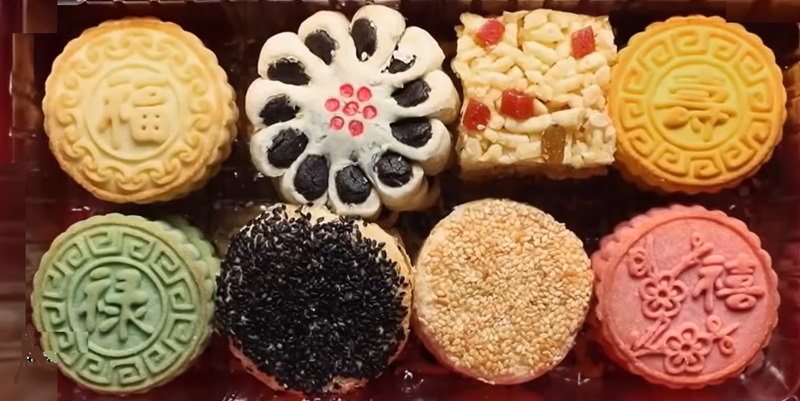
JingBaJian, a distinguished series of eight Chinese desserts crafted by the Qing Imperial kitchen, represents an elevated version of the traditional imperial pastry known as the 'big eight.' Each dessert within this collection carries a distinct symbolic meaning, encompassing concepts such as happiness, success, long life, education, excess, luck, wealth, and fertility.
Rooted in Beijing's culinary heritage, JingBaJian, literally translating to "Beijing's Eight Pieces," originated within the Imperial kitchen before gaining popularity among the wider populace. The cakes, shaped into unique forms, boast a variety of stuffings, including dates, red beans, pepper, plums, sugar, banana, raisins, rose, and salt. Over time, this traditional Chinese cake has undergone evolution, incorporating new ingredients like mung bean and Liao flowers, demonstrating the adaptability and enduring appeal of JingBaJian as it continues to be savored and celebrated for its rich cultural significance.
Chasan
-1710158547.jpg)
Chasan, a beloved traditional Chinese pastry hailing from Jiangsu Province, particularly in the historic city of Huai'an, is a culinary treasure celebrated for its unique flavors and cultural significance. With a crisp and golden-brown exterior, Chasan stands out with its distinctive rolled wirelike strips, crafted into various shapes such as combs, chrysanthemums, and pagodas.
This delectable pastry, named after "Cha" meaning tea, has earned its place as a quintessential afternoon tea snack. With a rich history spanning over a century, Huai'an Chasan has evolved from being a royal tribute during the Qing Dynasty to achieving international recognition. Its legacy continues, as it was designated one of the "Famous Chinese Snacks" in 1997, emphasizing its enduring popularity and peculiar flavor that has captivated palates both domestically and abroad. Chasan remains a symbol of culinary craftsmanship, connecting the present to a bygone era, and preserving the cultural heritage of Jiangsu Province.
Tang Bu Shuai
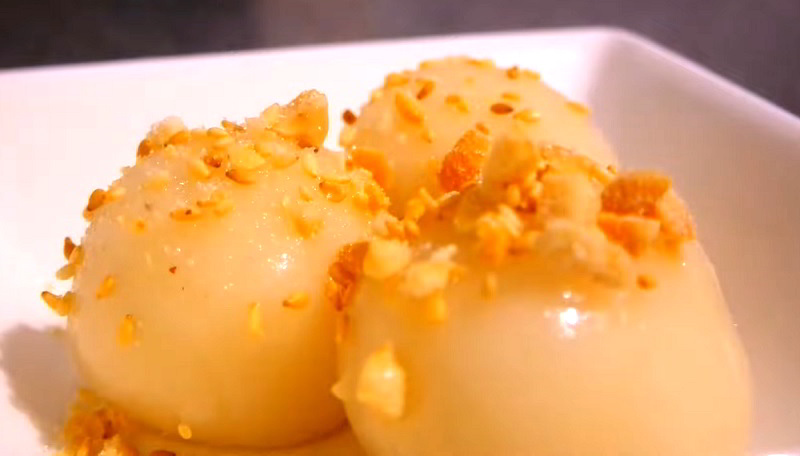
Tong but lut, a delightful Cantonese dessert, features glutinous rice flour balls bathed in sugar syrup and generously coated with crushed roasted peanuts, creating a harmonious blend of sweetness and nuttiness. The name, translated as "sugar-coated candy," aptly reflects the stickiness of the rice flour balls, ensuring that the toppings, including roasted sesame seeds and desiccated coconut, firmly adhere to the surface.
Beyond its culinary appeal, tong but lut carries cultural significance in traditional Cantonese betrothals. During courtship, a man visiting a potential bride's family would be served this dessert as a symbolic gesture. The sticky nature of the sweet treats conveyed the wish for the couple's married life to be as sweet as the dessert, emphasizing the idea of sticking together in harmony. Conversely, if the request for marriage was declined, a sweet soup with scrambled eggs and dried tofu skin would be served, symbolizing a less cohesive and potentially fragmented union. This tradition showcased a form of polite communication that allowed the suitor to gracefully maintain his dignity even in the face of rejection.
Kai Kou Xiao
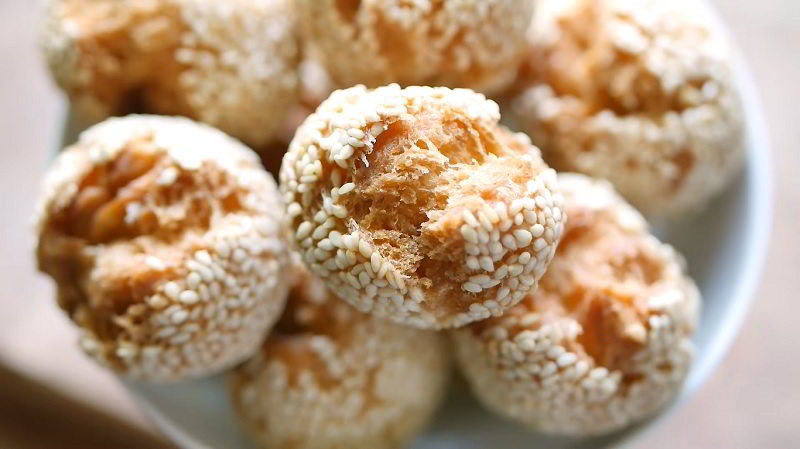
Kai Kou Xiao, affectionately known as "laughing balls," or "smiling sesame cookies," is a whimsical fried sesame egg cake that holds a special place in Lunar New Year celebrations. Recognized for its resemblance to a cheerful, grinning mouth, this treat is not only delicious but also a symbol of joy and festivity.
The traditional recipe involves crafting a dough by blending flour, peanut oil, sesame seeds, egg, sugar, malt sugar, and baking soda. Once the dough is prepared, it is cut into pieces and skillfully rolled in boiled sesame seeds before being expertly fried on a skillet. During the frying process, the dough forms a delightful crack, creating the appearance of a happy, smiling mouth, hence the name "Kai Kou Xiao" in Chinese.
This Lunar New Year delicacy is cherished not just for its delightful taste but also for the joy it brings, making it a delightful addition to the festive atmosphere.
Misandao
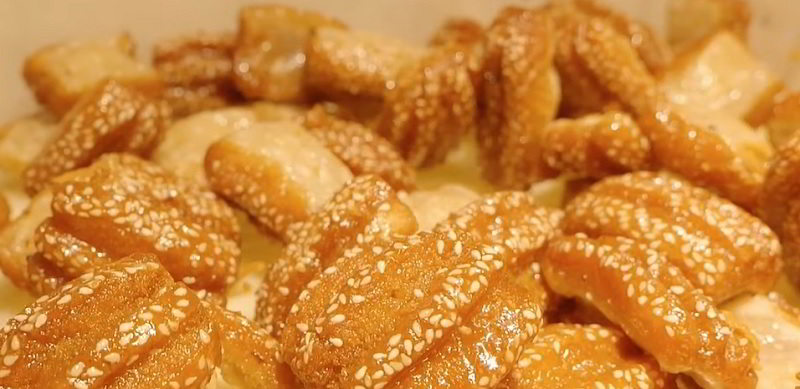
Misandao, a delectable dessert hailing from Xuzhou cuisine, is a fried cake coated in enticing malt sugar, offering a delightful treat for the taste buds. This traditional culinary creation is crafted using fundamental ingredients such as flour, baking soda, and vegetable oil.
The preparation of Misandao involves the meticulous creation of two distinct doughs. The first dough, destined for the outer layer, undergoes fermentation with water, baking soda, and malt sugar. Simultaneously, the remaining flour is blended with water to form the inner part of the delectable treat. The skilled hands of the chef then expertly stack, compress, cut, fold, and fry these doughs in vegetable oil, resulting in a delightful fusion of textures.
The final touch involves dipping the fried pieces into malt sugar, enhancing the sweetness and providing a luscious coating. Misandao stands as a testament to the culinary prowess of Xuzhou cuisine, offering a delightful and flavorful experience that captures the essence of traditional Chinese desserts. With its crispy exterior, tender interior, and the irresistible allure of malt sugar, Misandao remains a cherished treat enjoyed by those seeking the authentic taste of Xuzhou's culinary heritage.
Chinese Shortbread
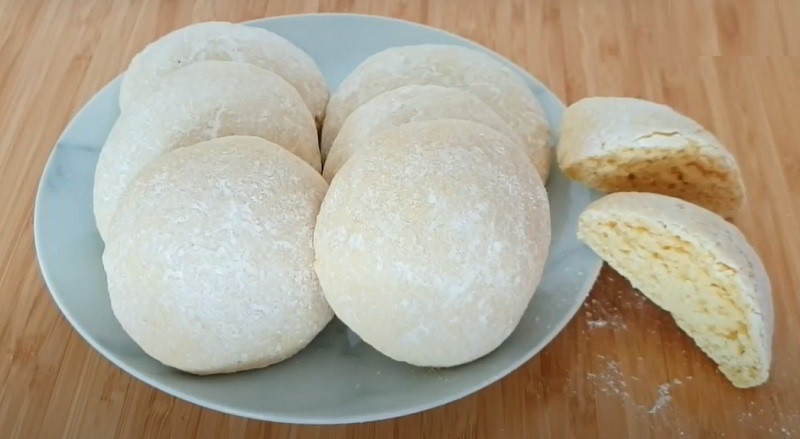
Chinese shortbread, a popular Chinese snack, boasts a distinctive round shape and is available in either white or yellow hues. Characterized by its textured surface, which may display delightful cracks, this delectable treat captivates the palate with its fluffy and sweet attributes. The texture of Chinese shortbread is a key feature, offering a delightful balance between airy and tender. Its flavor profile is characterized by a pleasant sweetness that adds to its overall appeal. Whether enjoyed as a quick snack or incorporated into various culinary creations, Chinese shortbread stands out for its unique round form, inviting appearance, and the satisfying combination of texture and taste that makes it a beloved treat among those who savor the diverse offerings of Chinese cuisine.
Yueguangbing
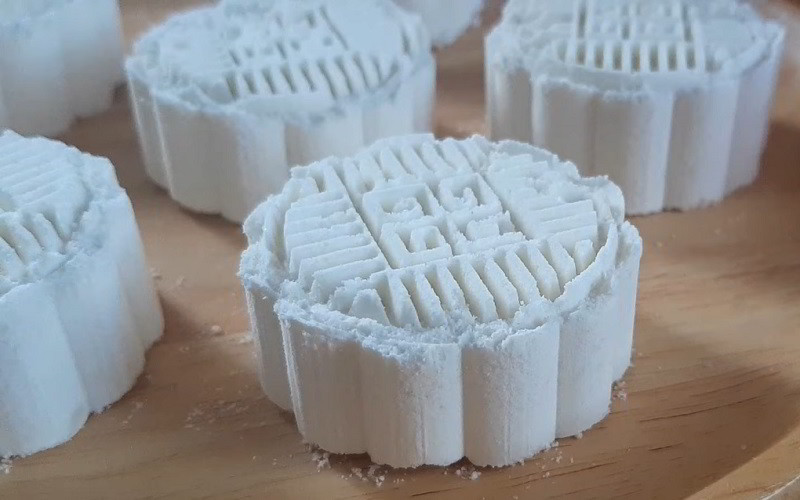
Yueguangbing, known as Hakka mooncake, moonlight cake, or Hakka mooncake biscuits in English, stands as a traditional mooncake rooted in Hakka heritage. This distinctive delicacy takes the form of a flat, disc-like biscuit, adorned with intricate carvings and paintings of flowers and animals on its surface. Its unique design and appearance make it a visually appealing treat. Originally crafted as an offering to the moon during the Mid-Autumn Festival, Yueguangbing holds cultural significance. Beyond its ceremonial use, this mooncake variation is embraced by the Hakka diaspora and individuals with Chinese or Hakka heritage, extending its influence to regions outside China, including Southeast Asia and Africa, particularly in places like Mauritius. With its rich cultural ties and distinct characteristics, Yueguangbing continues to be a cherished part of Hakka traditions and celebrations.
Et
-1709809614.jpg)
Et, a traditional pastry originating from the western regions of Guangdong province in China, holds deep cultural significance and serves as a symbol of jubilance. This delightful delicacy is a customary choice during various festivals, including the Spring Festival (commonly known as Chinese New Year), the Spirit Festival, and the Winter Solstice. Additionally, et is prominently featured in celebratory occasions like weddings, birthday feasts, and housewarming parties.
Crafted with meticulous care, et consists of glutinous rice cakes elegantly presented on banana leaves. The choice of banana leaves not only contributes to the visual appeal but also reflects a connection to nature. The act of sharing et with relatives and friends during these special occasions further enhances its role as a communal and joyous treat.
As a cherished part of Guangdong's culinary heritage, et embodies the spirit of festivity and togetherness, making it an integral element of traditional celebrations in the region. Its consumption is not just a culinary experience but a cultural tradition that fosters bonds and commemorates moments of joy.
Manggong Cake
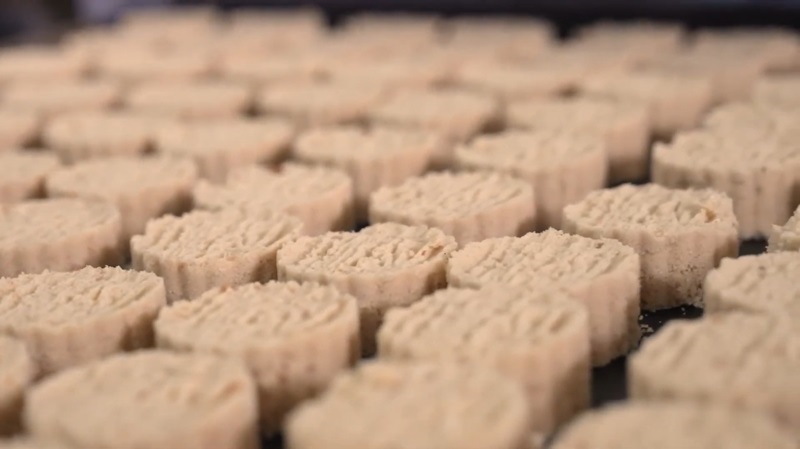
Manggong Cake, a beloved specialty originating from Foshan City in Guangdong Province, China, carries a rich history dating back to the Jiaqing period of the Qing Dynasty. The credit for this delectable creation goes to He, a visually impaired man residing in Jiaoshan Fang, Heyuan Street, Foshan City. Intriguingly, He was not just a culinary innovator but also established the "Qianqiantang" divination hall, where he shared insights into people's fortunes.
Manggong Cake is a culinary gem that showcases a unique blend of abraded rice crust, peanuts, oil, sugar, and sesame, meticulously crafted and baked over a charcoal fire. The result is a golden-hued delicacy renowned for its sweetness, appetizing flavors, and a delightful crispiness that has stood the test of time.
This local specialty has transcended generations, maintaining its popularity and becoming an integral part of Foshan's culinary heritage. The enduring legacy of Manggong Cake reflects not only its delightful taste but also the cultural significance attached to its creation, making it a symbol of Foshan's culinary excellence and a cherished treat enjoyed by locals and visitors alike.
Changzhou Sesame Candy
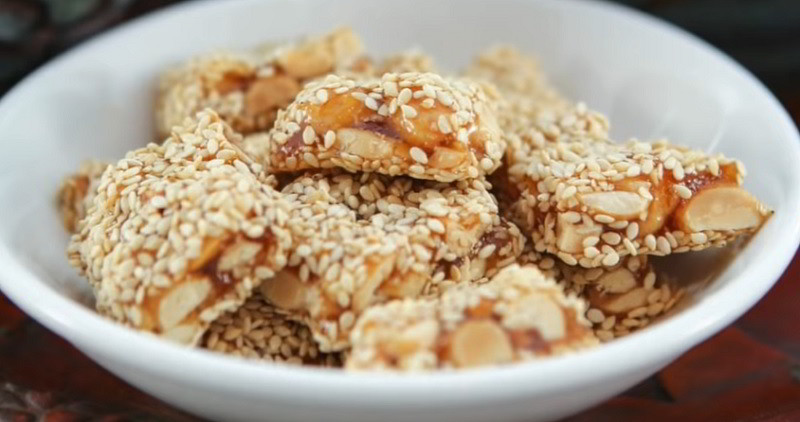
Changzhou Sesame Candy, a cherished traditional treat, holds a special place in the hearts of locals in Changzhou. Its roots trace back to the Tang Dynasty, marking a longstanding culinary tradition. During this historical period, residents of Changzhou pioneered the creation of sweets resembling deep-fried sesame seed balls, which eventually led to the emergence of the delectable Changzhou Sesame Candy.
This special cookie, adorned with a rich history, has become a beloved and iconic delicacy in the region. Its popularity transcends generations, reflecting the enduring appeal of this culinary gem. Changzhou Sesame Candy stands as a testament to the culinary ingenuity and cultural heritage of the local community, offering a delightful taste of tradition to those fortunate enough to savor its unique and time-honored flavors.
Guo Zi

Guo Zi, also known as the "Eight Samples of Xuzhou," stands as a quintessential traditional Chinese sweet, celebrated for its diverse collection of delightful treats originating in the northern regions. This delectable assortment, often enjoyed during festivals and ceremonies, holds cultural significance and is a symbol of good fortune.
Comprising eight distinct items, each with its unique origin, name, and preparation method, Guo Zi showcases the culinary richness of northern Chinese traditions. From Mi San Dao to Gui Hua Su Tang, each element adds a layer of flavor and history to this cherished ensemble.
Traditionally, Guo Zi is shared among families and friends during special occasions, serving as a meaningful gesture of blessings and well-wishing. Over time, individual items from the collection have become popular choices, allowing people to partake in the tradition in their own way. Today, Guo Zi continues to symbolize the spirit of festivals and ceremonies, connecting people to the rich culinary heritage of Xuzhou and northern China.
Masan

In Tibetan cuisine, Masen stands as a unique and cherished pastry, representing the rich culinary heritage of the region. Crafted with precision and a blend of distinctive ingredients, Masen offers a delightful journey for the taste buds.
At its core, Masen features tsampa, a roasted barley flour integral to Tibetan cuisine. This forms the foundation, infusing the pastry with a nutty and robust flavor. Complementing the tsampa are dry cubic or curd cheese, adding a savory dimension that harmonizes with the earthy undertones of the barley.
Yak butter, a staple in Tibetan cuisine, contributes a distinctive richness and depth to Masen. Renowned for its unique flavor profile, yak butter imparts a creamy texture and a hint of smokiness, elevating the pastry to a culinary masterpiece.
Brown sugar introduces a touch of sweetness, creating a balanced and nuanced flavor profile. The addition of water serves to bind the ingredients together, resulting in a cohesive and delectable pastry.
Masen encapsulates the essence of Tibetan culinary traditions, reflecting the region's reliance on hearty and locally sourced ingredients. With its combination of tsampa, cheese, yak butter, brown sugar, and water, Masen not only tantalizes the palate but also offers a cultural journey, connecting individuals to the diverse and vibrant tapestry of Tibetan cuisine.


